

Safari Vehicles – Everything You Need to Know About Cars for the Bush
Safari vehicles come in all shapes and sizes and offer different ways to experience the African bush. The car is something that you would probably overlook when choosing one for your safari, but it can be the pivotal factor in how you experience your safari.
From the safari enthusiast who knows nothing about cars to the weekend explorer who has the 4×4 with all the extras you can imagine, this is a guide on everything you need to know. It breaks down what to expect from the safari vehicles you will be using when going on your first safari trip.
If you haven’t quite got as far as booking your first trip, then this guide to the best safaris in Africa for first-timers is the perfect starting point.

What is a Safari Vehicle?
You might be asking yourself what African safari cars are and why they matter? In general, they are large 4×4 vehicles that have been modified to ensure the passengers’ safety. It is worth remembering that the regulations about the vehicles differ from national parks to private reserves and from province to province.
Big, small, open, or closed — there are a few different types of vehicles for safaris that the different national parks use. The vehicle should suit your needs or what you want to get out of the safari.
Unfortunately, you don’t always have a choice when it comes to what safari cars are available. So here is everything that you need to know to help prepare you for what to expect and how to choose what vehicle is best for you on safari.
If you are more of the adventurous type and would rather rent your own vehicle, this will also help you in understanding what vehicle would be best. All safari vehicles should at least have some, if not all of these features:
- Snorkel to handle deep water
- Upgraded suspension for extra comfort and durability
- Upgraded wheels and tires suited to the terrain
African Safari Vehicles
When it comes to an African safari car, there are a number of different types of vehicles that could be used on your drive. Most safaris however will be in a 4×4 safari where the terrain requires a 4-wheel drive vehicle to pass through. But there are other routes that will allow you to travel in a much larger group in more comfort, such as in a sprinter van on a hardpack road.
Some National Park’s offer a pickup service for a private tour where the guide will pick you up in the safari vehicle, with the canvas sides closed. They will then open the sides once you start your safari. You wouldn’t exactly want to be in an open vehicle driving along the freeway but on the game drive, it is perfect. A closed vehicle would be more comfortable in that scenario but not as good on the game drive itself with limited viewing available.
The two most common vehicles used are either safari Jeeps or Toyota safari vehicles. They both have their own advantages and disadvantages but are some of the best for the job.
Toyota Safari Vehicles
The legendary and most reliable of them all, most game parks use Toyota Land Cruisers as their vehicle of choice. Having replaced the trusty Land Rover Defender and the African safari Jeep a few decades ago, Toyota changed the game forever.
There are both enclosed and open Toyota safari vehicles, depending on the location and guidelines of the park. Fully open vehicles provide unrestricted views of the world around you, perfect for the photographers who want to get that perfect shot. An open vehicle has no doors, windows, or frames to block your view. You also have the ability to listen and talk to your guide, ensuring that you don’t miss a thing and know what is going on at all times.
The closed version offers more protection from the elements on those colder and wetter days. The downside, though, is that your view is more restricted and you have to look through windows. This isn’t ideal for those wanting to take photographs but perfect for those who want a comfortable experience.

Safari Trucks
If you really want to go off the grid and live in the bush, then a safari truck is the answer. These beasts are normally caravans on wheels with either 4×4 or 6×6 capabilities and can live in the middle of nowhere for weeks on end. Other safari trucks that are used are normal vans, such as a sprinter van. These will take you and a group of your friends in amazing comfort on more maintained and established tracks.

Types of Safari
The type of safari that you choose to do will have an impact on the type of safari vehicle that will be available to you. Not only that but the location of your safari will also be a factor in what vehicle is available.
Kenya and Tanzania prefer to use fully enclosed vehicles with their passengers but with the added modification of an expanding or opening roof. This means that if you get tired of looking through the window with limited visibility, you can stand for an uninterrupted view. The roof is then closed once the safari is over. This is different in South Africa where mostly open-air vehicles are used for a much better experience.
Guided Game Drive
The most popular of the safari options are the guided game drives on private game reserves and National Parks. These are the go-to for anyone who is visiting a game reserve.
The professional guides will either use an open or enclosed vehicle depending on their rules and preference. If you visit during the summertime, don’t forget a hat to protect you from the sun. If you brave the winter months then layer up as it can get really cold in the bush at all times, especially when the sun goes down.
If you are wanting the full open vehicle experience then this short afternoon safari in the Kruger is a beautiful and quick excursion into the African landscape. Don’t forget to wear a solid pair of boots and clothes that you wouldn’t mind getting dirty as well, as you can expect a lot of mud and dust.
Self-Drive Safaris
For the mavericks and explorers among us, the self-drive safari is one of the top bucket list adventures. Renting or taking your own vehicle through a national park and going at your own pace to explore the landscape is the perfect option. It is possible to do a self-drive safari in any car with plenty of accommodation options in National Parks. For the ultimate experience, you’d want a 4×4 with all the bells and whistles.

Different Safari Cars for a Different Experience
Now that you know that a safari car isn’t just a car and that they are different, you will be able to choose the perfect safari to suit your needs. If you are wanting a photographic excursion into the wild then an open safari car is the best.
If you want to feel a little more protected then an enclosed vehicle is your car of choice. If you are planning a trip to Africa or Kenya in particular, then this guide on all you need to know about safaris in Kenya will help plan your trip.
Why not give this 3-day safari adventure in Nairobi a try? It is a beautiful drive into the Kenyan landscape.
Don’t forget to dress appropriately for the car that you will be driving in and enjoy every moment of your safari.

Maldives Vacation | Packages, Costs, Trips & More 2024

Nairobi Safari Parks, Tours & More | Wildlife Near and Far

Best Time to Go on an African Safari | 5 Pro Tips for Planning Your Holiday

Thornybush | Game Reserve, Lodge & Safari

Natural Remedies for Anxiety – How to Cope with Holiday Stress

Africa Trips for Couples – Getaway to Africa
Leave a reply cancel reply.
Save my name, email, and website in this browser for the next time I comment.

Compare items
- Total ( 0 )
Shopping cart
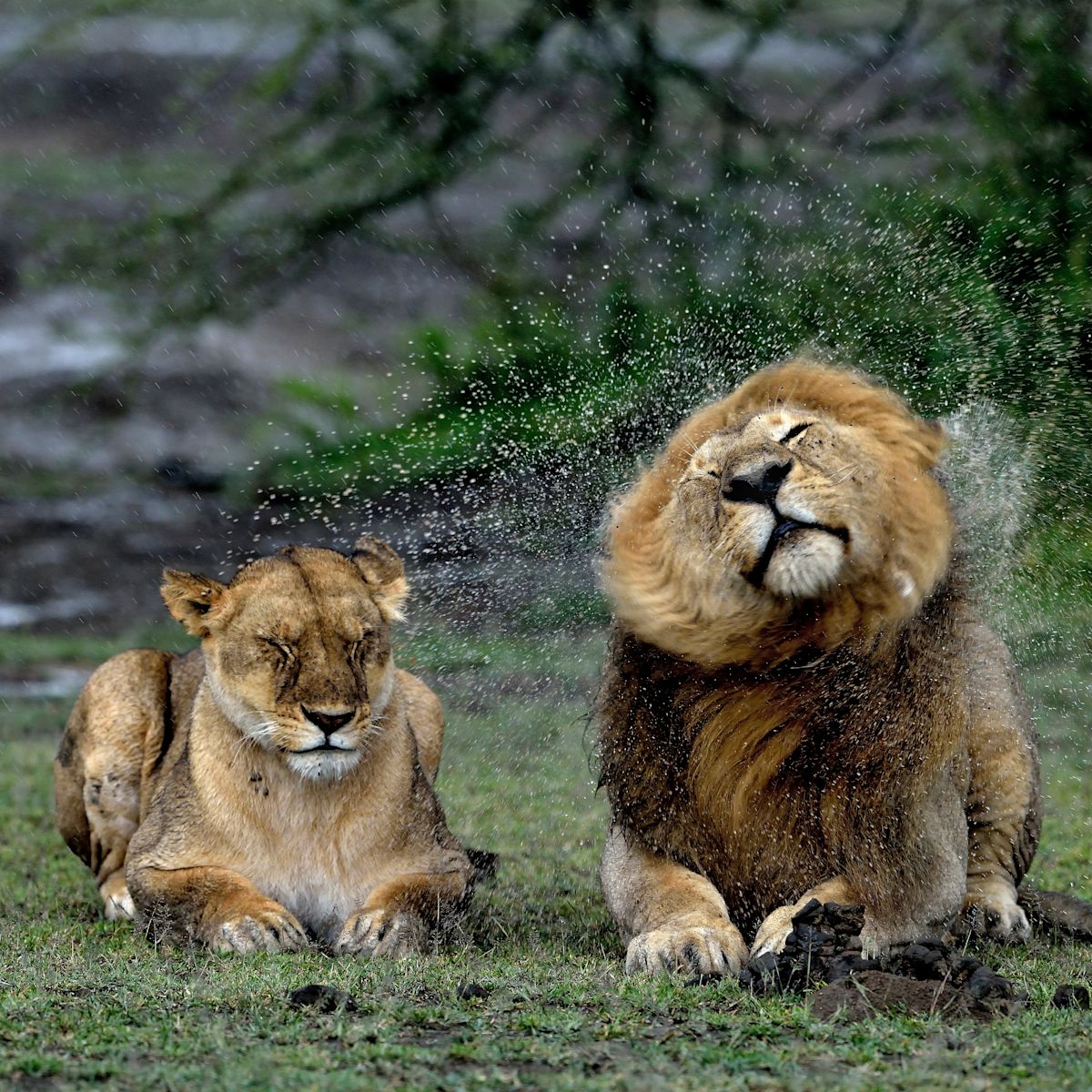
Safari safety tips (not just for dummies)
Let's talk safari safety. This means pointing to the African nations that are safe to visit, how to stay safe in terms of the wildlife (it's not all obvious stuff), what to know for self-drive safaris, and the safety perks of organised safaris.
We all know that if you plop yourself down among a circle of baboons, you’re asking for trouble.
So we’re not going to use this blog post to talk about the importance of not feeding or petting the wildlife on safari. We assume you know that already. Instead, we’re going to offer you some solid safari safety tips that are actually worth your time.
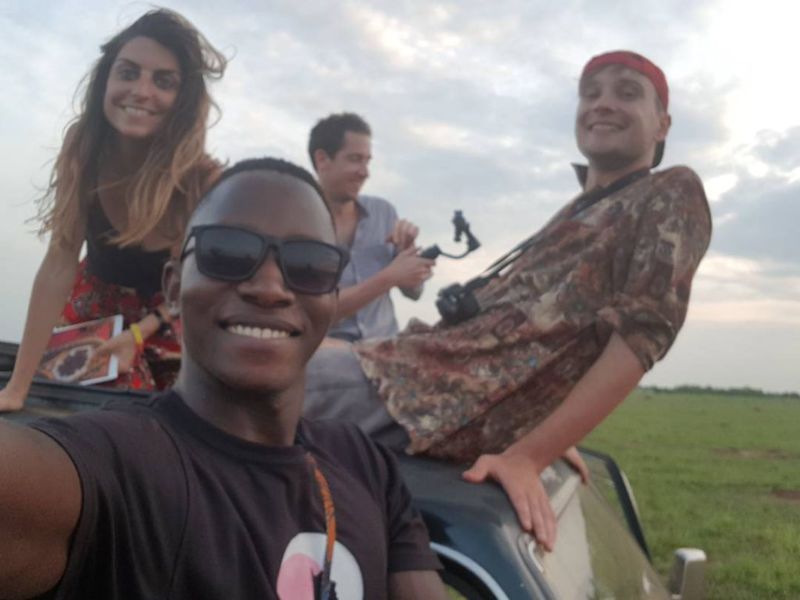
An African safari is an unforgettable experience
There are two primary aspects to safari safety:
- Ensuring you’re safe from the wildlife (both big and minute).
- Avoiding any dangerous or unstable regions.
That said, there are some other points we're going to make that are more about comfort than outright danger, like not getting stuck in a muddy rut and spending the night camped out in your 4x4.
Enough preamble.
How to stay safe on a safari drive
Safaris aren’t dangerous by nature.
That said, a safari – like riding a bicycle or stepping out your front door – is not entirely risk free. We take our lives into our hands every day. But we’re happy to report that a safari isn’t dangerous if done right.
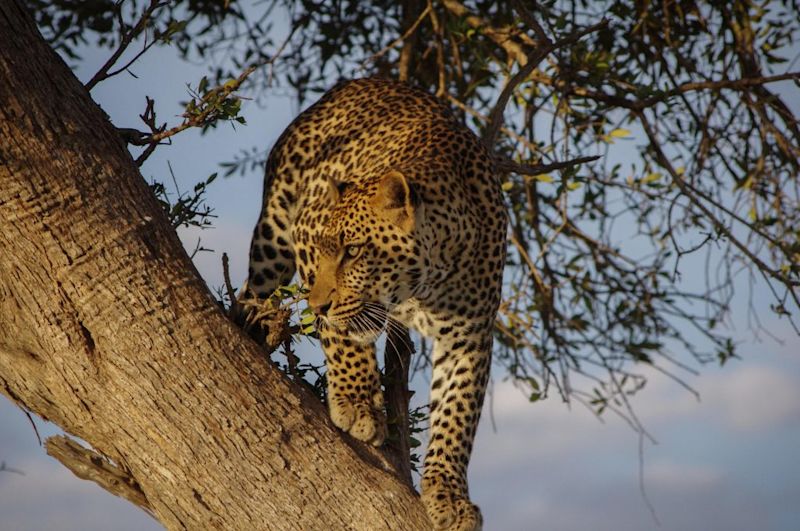
Leopards are elusive, making spotting one on a game drive a real coup!
When it comes to African wildlife, there are many dangerous animals, both large and small. And many will happily bite, buck, sting or stomp you if you aggravate them. (And just being in their way can be aggravating to some.) But the good news is that you’re not in danger from the wildlife unless you act recklessly or stupidly.

Cheetahs don't hassle humans unless the humans hassle them first
So you want to be sensible in the manner you go about game viewing, whether you're doing a self-drive safari or an organised one.
The main thing for keeping safe is to stay inside your vehicle when in a game park (unless your safari guide says it's safe to get out). We repeat: your vehicle is your safety shield on safari. Stay inside of it!
If you spot some exciting wildlife, don't jump out of the vehicle to photograph it – stay where you are and take a pic from there! #Safety101
Even if you see a solitary, sweet, doe-eyed duiker next to your car, don't get out to snap a close up (use your zoom lens for that). You never know what else is lurking just beyond view. And even the animals that look super cute and cuddly can sometimes be dangerous under the right set of circumstances.
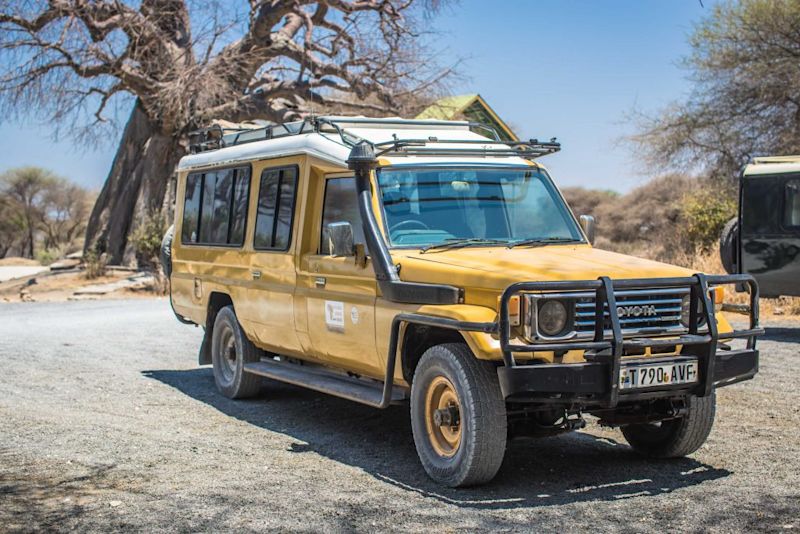
Always stay inside your vehicle unless your tour guide indicates it's safe to step out
Which are the most dangerous African animals?
It’s surprisingly difficult to pinpoint the most dangerous animal in Africa.
This is because danger comes in many forms. Some animals are hazardous because they have brute strength, others because of their immense size, and others because of their fearsomely strong jaws and sharp teeth.
Still others are highly dangerous because of their speed, wiliness, venom or camouflage.
So is the most dangerous African animal the lion ? He’s the king of the jungle, after all. But what about the elephant , which can crush you like a petal? Or the giraffe , which can actually decapitate you with a kick? Or the hyena , which has the strongest jaws of any mammal?
We also mustn't forget to consider the hippo . In spite of its ungainly appearance, the hippo is surprisingly swift, and is also aggressive to boot. In fact, hippos kill more Africans on average than any other large land mammal. (But once again, they – like other animals – are only dangerous to safari-goers if you step out of your vehicle.)
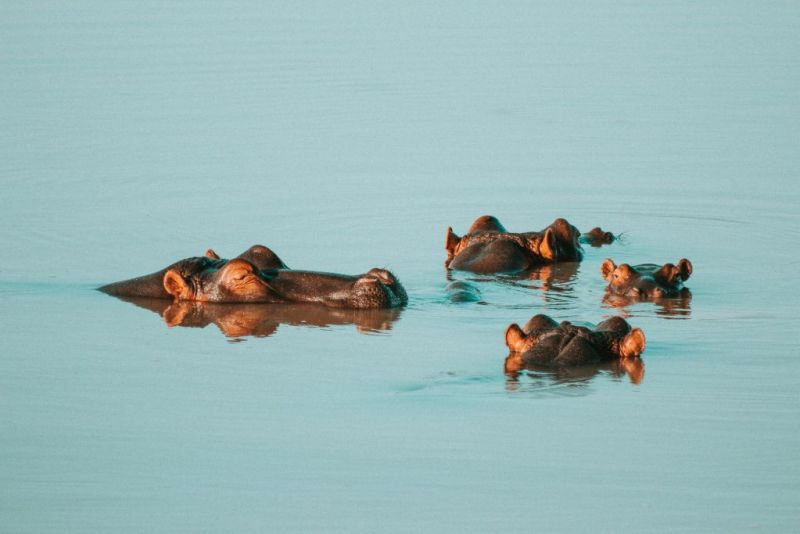
Hippos are the most dangerous of Africa's large land mammals, not lions
But wait, we must consider some other gnarly creatures before crowning our Most Dangerous Animal winner ...
The Big Five
Colonial-era hunters coined the term ‘ the Big Five ’ to identify the large game that they found to be the most dangerous when hunted on foot.
This is because these animals ( lions, bush elephants, Cape buffaloes, leopards and black rhinos ) are very aggressive when aggravated or cornered. But we don’t, of course, advocate hunting the Big Five or any other animals for that matter. Spotting them is sport enough!
Did you know that the Cape buffalo is actually considered the most dangerous of the Big Five? This is because they will actually pursue or ambush hunters when feeling under threat.
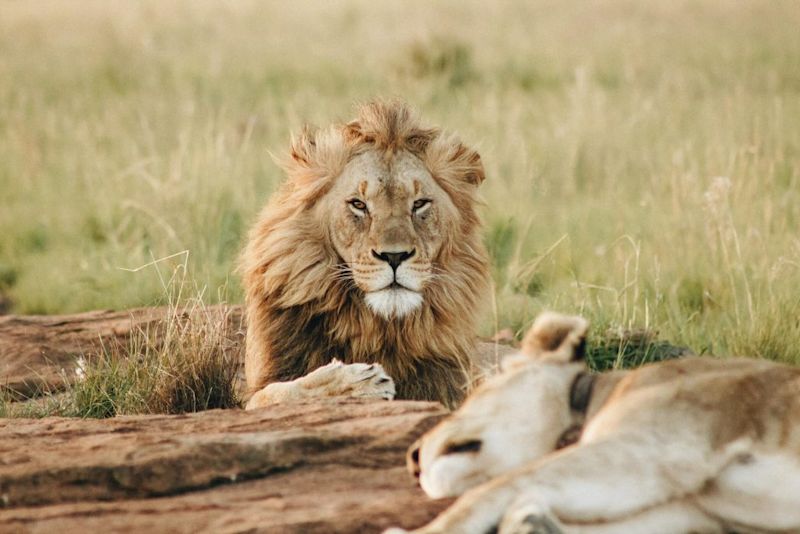
Lions are formidable predators, but they're far from being Africa's most dangerous animal
Other (surprising) contenders
But when we think of fearsome wildlife, we can't forget the terrible Nile crocodile ! These beasts have jaws almost four times stronger than those of hyenas. (Shudder.) And there's also the puff adde r, whose camouflaged skin and venom make an awful combination.
Another contender many might overlook is the honey badger . This small creature is one of the strongest, toughest and most ferocious creatures out there. In fact, a honey badger will take on pretty much any species if the need arises, from lion to leopard to hyena.
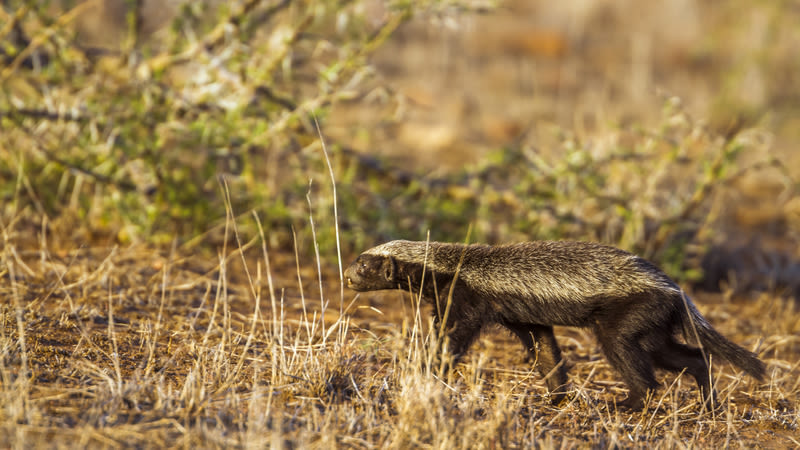
Looks can be deceiving – NEVER mess with a honey badger
Our pick for the winner
But if the most dangerous creature were to be decided purely based on the number of human fatalities, then the tiny malaria-transmitting mosquito is the most dangerous of all African animals.
Malaria is the scourge of Africa. According to WHO, it killed over 400,000 Africans in 2019.
Is malaria a problem on safari?
Most people thinking of a safari want to know if they’re safe from animals, imagining irate lions and ticked-off rhinos.
But really, it’s the tiny mosquito that presents the biggest threat.
Female anopheles mosquitoes that are infected with the malaria parasite bite and transmit the disease to hundreds of thousands of people in Africa every year.

Map of malaria distribution in Africa
As you can see from the map, many African nations sit squarely in the malaria zone. So this isn’t an issue you can ignore when planning a safari. Instead, it should form an integral part of your travel prep.
How do you protect yourself against malaria?
There are two ways to protect yourself from malaria. Firstly, we recommend visiting your local GP to ask after anti-malaria meds.
Secondly, once in a malaria-risk area:
- Use insect repellent.
- Wear long pants and long sleeves, as well as closed shoes.
- Sleep under a mosquito net.
Fit for Travel has a nice page on malaria prevention that we can also recommend for learning more on this important topic.
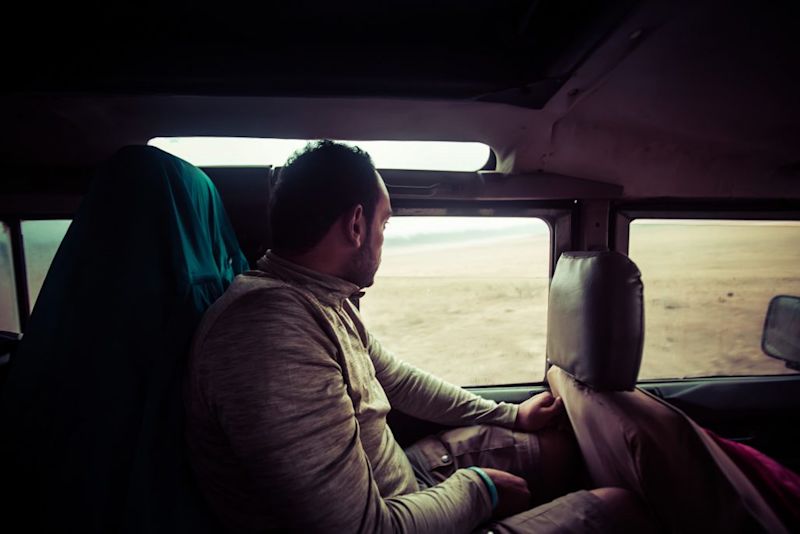
Long-sleeved shirts protect you from sunburn and mozzie bites
Which is the safest country for safari?
You also want to visit a safe country.
We discuss which African countries offer good game spotting while also being safe for tourists. We know you want to see the Big Five (elephants, lions, rhinos, buffaloes and leopards), so we highlight the safest countries containing these magnificent animals.
The main way to be safe on safari is to know what you’re doing, or travel with someone who does.

The endangered rhino is a favourite among many safari-goers
Of the African countries that offer really good safari opportunities (and contain the Big Five), the following are the safest according to both the Global Peace Index and general consensus (in alphabetical order):
- Rwanda
While some of these countries have had some security issues in recent years, those issues have been in areas far from the safari parks. In other words, they're all perfectly safe to visit when you're heading there on safari. Botswana is considered the safest of all African nations. And Zambia is ranked as the third safest nation.
We personally have no issue trotting off to any of the above-mentioned destinations. And we often do!

Botswana is Africa's safest country, while also being a seriously epic safari destination
6 self-drive safari tips
A big decision for would-be safari-goers is whether to do a self-drive safari or sign up for an organised one.
Some folks understandably enjoy the independence and thrill of a self-drive. That's totally fine. We just don't, however, advise going with this option unless you have done your homework thoroughly.
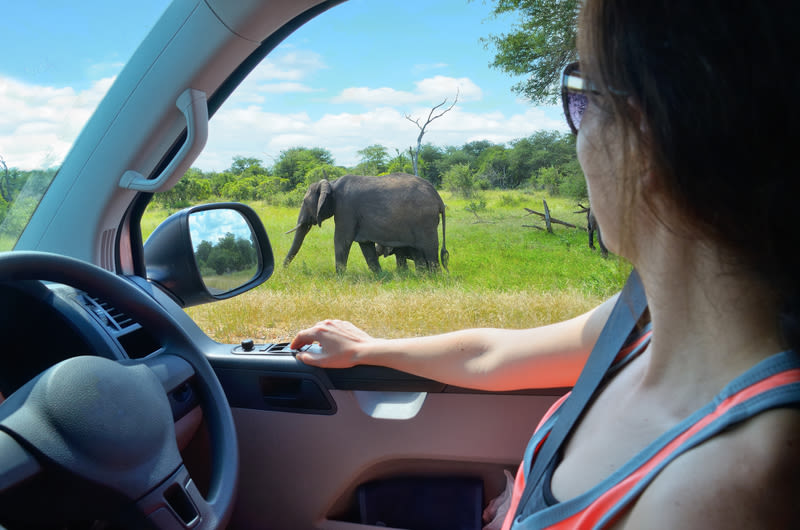
Some parks are better suited to self-drive safaris than others
You need to have a decent vehicle with high clearance to go on a game drive on your own. Depending on the terrain and condition of the roads or tracks, you might also need a four-wheel drive. Further to this, you need to know how to handle your vehicle really well in rough terrain or you could become unstuck ... by getting stuck.
Each park and reserve is different in terms of size, terrain and road conditions, so be sure to do your research first.
We recommend doing a self-drive safari only in smaller parks that have good signage and decently maintained tracks. Be really cautious of heading out on your own in wet or muddy conditions.
It's also better to do a self-drive safari only if you have GPS, or if the park has good cellphone coverage.
You should also think twice about a self-drive safari if you're heading into a very large park that isn't well-marked to help you navigate your way. Not all parks and reserves offer the same amenities, quality of roads, and so on. If you do on your own, be sure to never leave the demarcated road, not just because this usually isn't allowed, but also for your own safety.
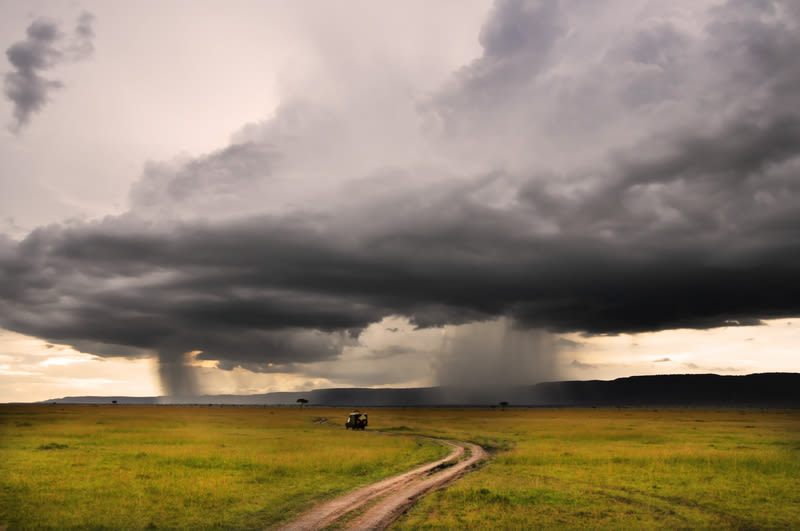
If you get lost in one of the big parks, help could well be very, very far away
Ideally, you should do a first safari drive with a guide in the passenger seat before heading out on a self-drive. Use that initial drive to quiz your driver on how to stay safe and drive in a safe manner.
Here are some further tips for those looking to do a self-drive safari:
- Never get closer than 20 m (65 ft) to large game, especially Cape buffaloes, rhinos and elephants.
- Give a wide berth to injured animals and those with young.
- Don't hoot (honk) or shout at animals to try get them to turn, raise their heads, and so on. Similarly, don't wave wildly at the animals.
- Drive very cautiously around solitary elephants and buffaloes.
- Don't rev your engine loudly around the animals, as this could startle or alarm them.
- Don't bring smelly foods like fruits in the car with you. Many animals have an excellent sense of smell, and may want a taste of what you're having.
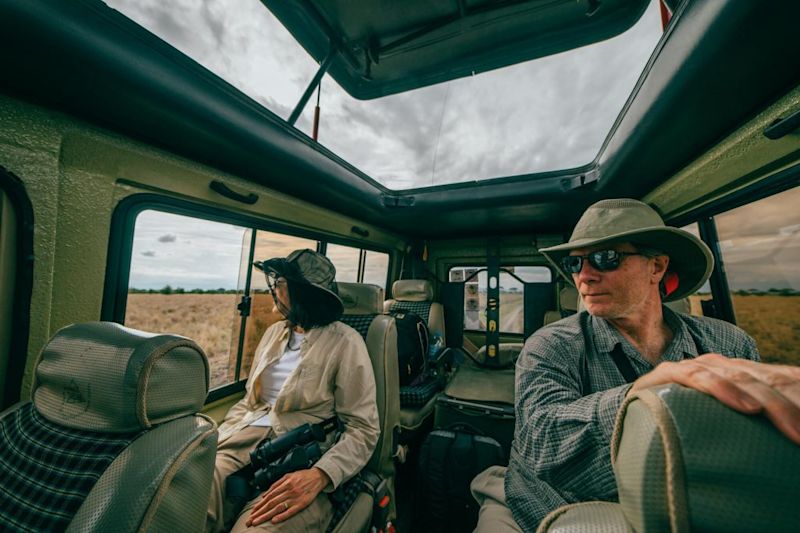
You need a 4x4 that can handle vast distances and rough terrain in order to go on safari safely
When on safari, please think of yourself as visitors in the animals' home; you should act respectfully and not make a nuisance of yourself. The less that humans interfere with the day-to-day lives of the wildlife, the better.
In fact, sometimes animals are put down after attacking people, even though it was actually the latter's fault for provoking them. Don't be the sort of human who comes on safari and leaves a legacy of death.
Most incidents in game parks occur when people grow overly confident. Respect the wildlife, remembering that it is indeed just that: wild.
Why organised safaris are safer than self-drives
Organised safaris offer many perks, such as providing you with an appropriate safari vehicle as well as a driver-cum-guide. (Safari tour operators usually organise your accommodation for you too.)
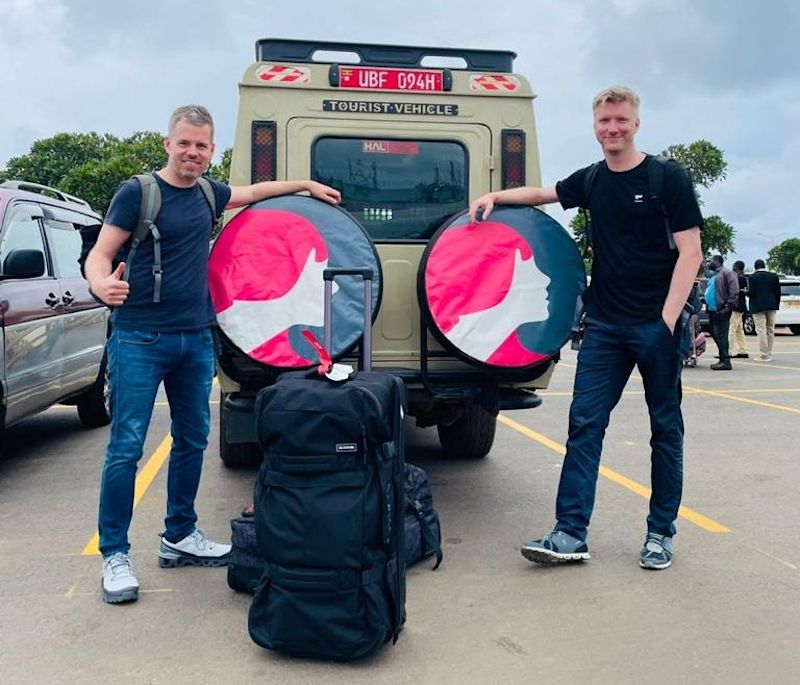
The vehicle used in a game drive is important in terms of comfort, safety and reliability
From a safety point of view, going on safari with a tour operator is a very good idea. Qualified tour guides have in-depth knowledge of how to keep you safe (in all respects).
Specifically, the safety advantages of going on safari with a trained tour guide are:
- They have the right sort of vehicle and training and so can safely and effectively navigate the often tough, muddy terrain. (Sitting in a broken-down 4x4 in a hot game park is no bueno .)
- Safari guides know which animals are dangerous, and in what ways, so they can act sensibly and advise you of what to do and not do in all situations.
- They know how close you can get to the different animals while staying safe and also not scaring them off.
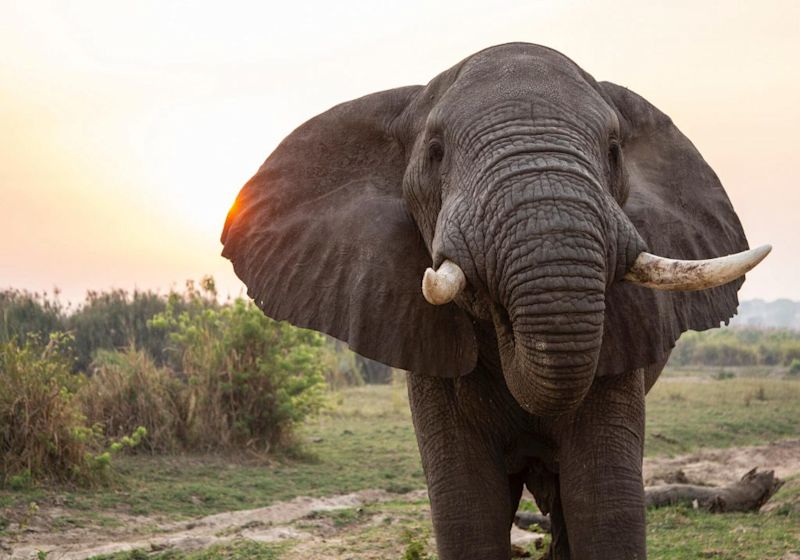
Male elephants are more aggressive during musth, a period of heightened testosterone
Further to all this, safari guides also know about the different animals' life stages and patterns. For instance, male elephants are particularly aggressive during musth (a period of heightened testosterone). So one should drive extra judiciously when in the presence of such individuals to avoid being charged.
Other perks of organised safaris
Some of the other perks of going on safari with a trained guide but that aren't related to safety are:
- Safari guides are excellent at game spotting! They'll notice and point out animals you'd otherwise have missed.
- Your guide is in touch with fellow guides and rangers about where the best animal sightings are, as well as any problem areas like a flooded road.
- They have intimate knowledge of the animals you spot, so can really make what you're seeing that much more interesting.
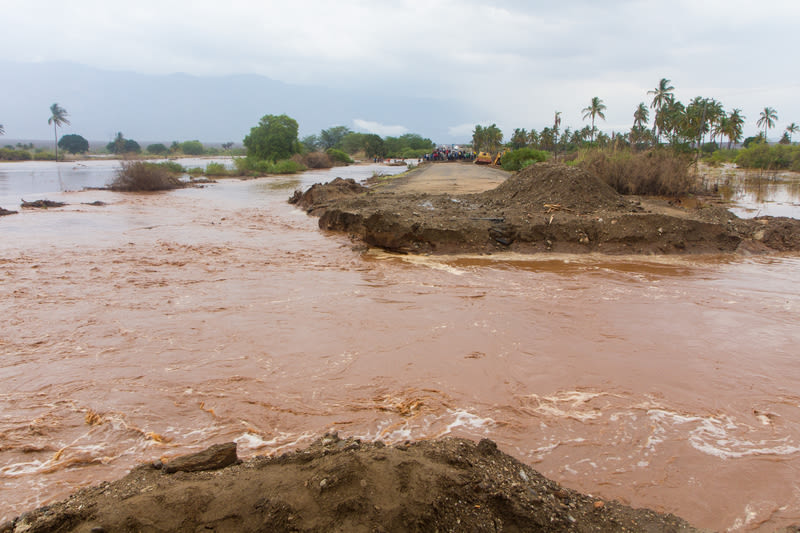
Safari guides are often in touch to alert each other to issues as well as animal sightings
Safari guides help you avoid unwittingly disruptive behaviours
If you're interested in sustainable travel (which we hope you are!), a safari guide is also invaluable in helping you to reduce the impact of your visit. For instance, did you know that you shouldn't touch the vegetation?
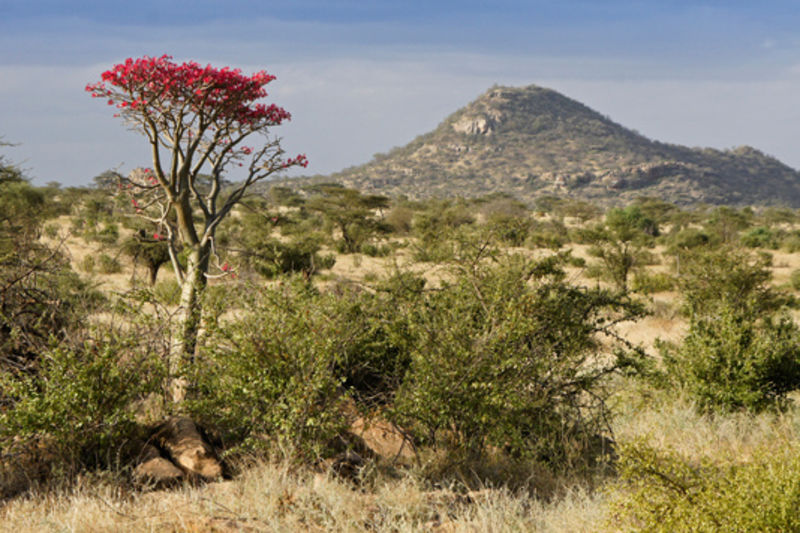
It might seen harmless, but you shouldn't touch vegetation on a safari
There are a few reasons why your touch can be damaging to certain plants, including the fact that some plants release defensive chemicals or aromatic compounds when touched by humans. These may temporarily alter the mix of scents in the air, which could potentially affect the nearby wildlife's perception of the environment.
Who knew touching a petal or leaf could have such an impact? Well, of course, a trained safari guide knows this, and will help you to avoid such potentially harmful practices!
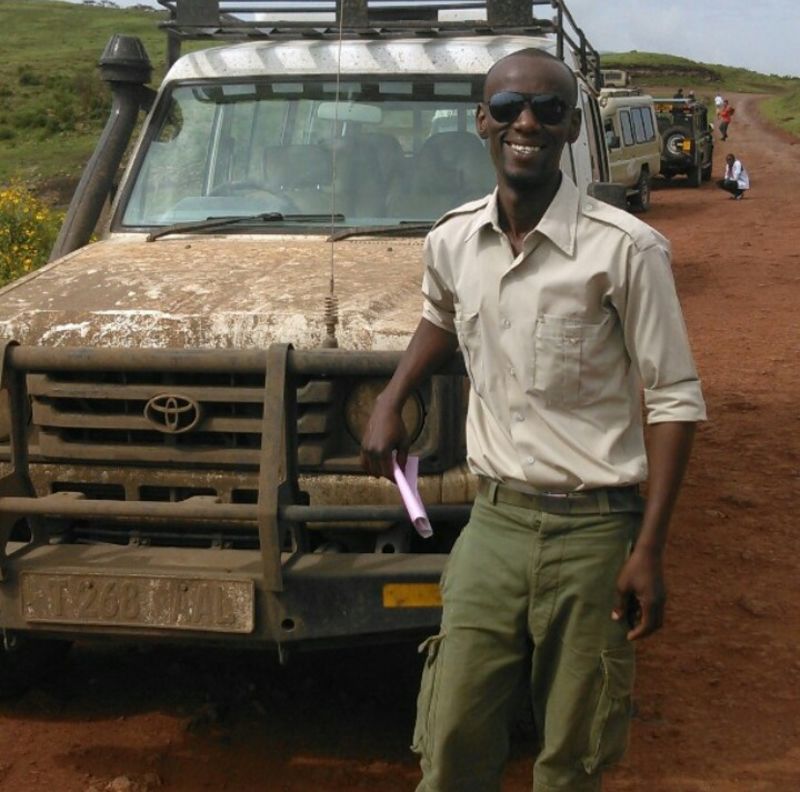
Kazi is one of our highly knowledgeable Tanzania safari guides
Don’t pay a tour company you haven’t researched
As with any industry, the safari tourism trade has its share of shysters.
There are tour operators who don’t train or pay staff properly, for instance, as well as full-on scammers and everything in between. Have nothing to do with them, both for your sake as well as for the sake of the tourism industry.
While a safari is a perfectly safe enterprise when done properly, it can quickly descend into something unpleasant, even dangerous, if not done right.
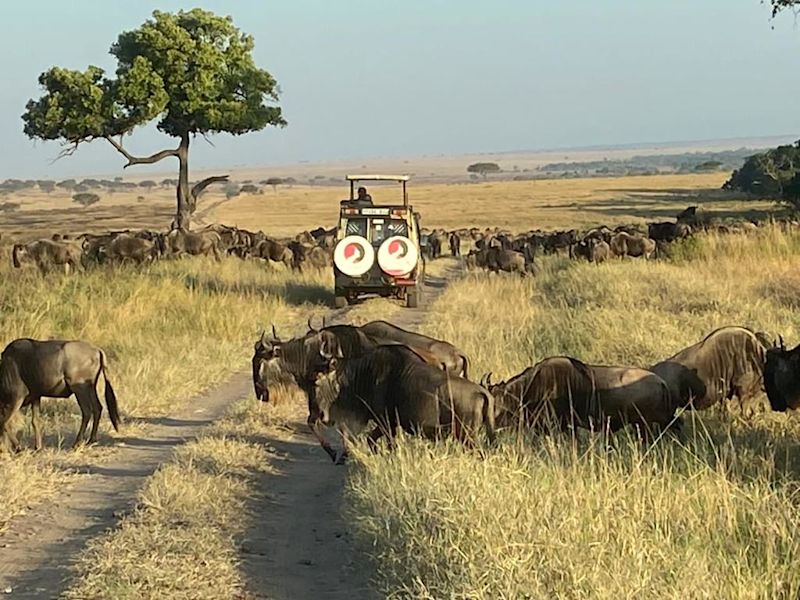
One of our FA vehicles on safari in the Serengeti
We advise that you thoroughly research any safari operator you’re considering using before forking out any money.
What does that research look like? Well, we suggest that you:
- Check some independent review platforms such as Trustpilot and look on sites like Facebook to see what past clients have to say.
- Look for a physical address on the website.
- Phone or email the company to assess their responsiveness and professionalism.
- Pay attention to your gut. Don't talk yourself into ignoring anything that doesn't feel right.
Never pay any money in advance to a company you’re not confident is fully legit.
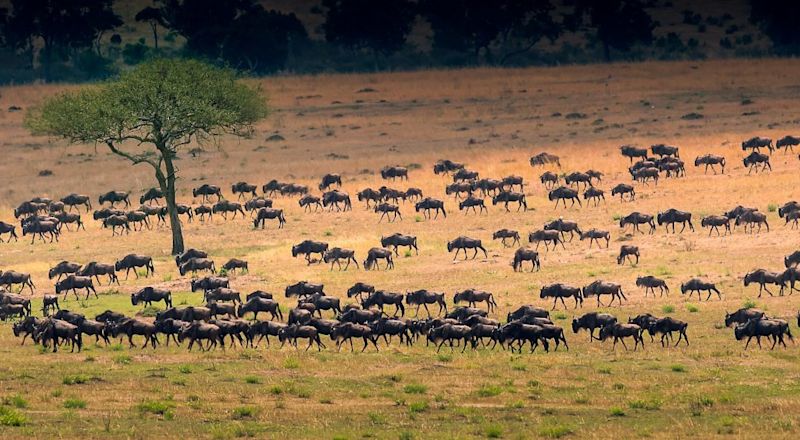
Witnessing the Great Migration, which takes place in Tanzania and Kenya, is arguably the very best African safari experience
If you're interested in perhaps doing a safari with Follow Alice, please check out our various exciting safari itineraries , which include safaris in Kenya, Tanzania, Uganda and Rwanda! You can also take a look at our Trustpilot reviews .
Is Going on Safari Dangerous?
Tips on how to stay safe
:max_bytes(150000):strip_icc():format(webp)/anoukmarrakech-56a373305f9b58b7d0d20299.jpg)
moodboard / Getty Images
Every safari has an element of danger; that's what makes it exciting. While many of the animals you'll encounter can be dangerous , the four that you really have to watch out for are—elephant, lion, buffalo , and hippo (add crocodiles to that list if you're near water).
Most safari operators and guides at the various lodges and game reserves will stress basic precautions you need to take while game viewing. It will also help if you follow basic safari etiquette. If you are on safari in smaller, more remote game parks or encounter wildlife outside of game parks, here are some general rules to follow:
If You Are in a Vehicle
- Always stay in your car. When driving in a game park remain in your vehicle. Only get out at designated "hides" and follow the rules that will be posted. There have been several fatalities that occurred because a hapless tourist has wandered out of their vehicle, camera in hand, to get a closer shot of an elephant or lion. It may sound silly, but it happens.
- Don't stand up or stick anything out of the car . Many safari vehicles are open-topped, and the wildlife is generally accustomed to these. But, if you stand up or wave something around on the side, some animals will get annoyed and consequently aggressive. You also have to remember that poaching is rife in many areas, and anything that looks like a gun can trigger a very nasty response from a wild animal.
- Drive slowly and carefully . During the wet season, the grass can get quite high, and it's not always possible to tell when a large buffalo or elephant will decide to step into the middle of the road. Remember, you have to stop if this happens. Buffalos and elephants are not in the least bit afraid or impressed by you or your car.
- Keep your windows up . If you are in a car with windows, it's better to keep them closed. You could end up being harassed by baboons as you drive through the more popular game parks. They are so habituated to cars they are not afraid to leap upon them and dent the roof. You don't want one inside your vehicle.
If You Are on Foot
If you are on a walking safari, you will no doubt be briefed on safety by your guides. But, there are times when you'll be walking in Africa and encounter wildlife without a guide. You could run into elephants even in the middle of town. Baboons are also a menace in many places and a lot larger than you think. Here are some basic tips if you encounter wildlife eye to eye:
- Try and stay downwind from the animal . If the animal catches your scent, it will know you are there, and you have no idea whether this will make it angry or afraid.
- If an animal you approach looks hostile, make sure you are not in the way of its escape route . Give the animal a clear birth and don't make any noise to aggravate the situation further.
- Walk away slowly . If you encounter an animal that doesn't like your presence move back slowly and quietly.
- Avoid swimming in rivers or lakes unless you are absolutely sure there are no hippos or crocodiles. Hippos are the most dangerous of all the big animals. They feed on the banks of the river, and if they sense danger will charge and attack whatever lies in their path in order to get back to the safety of the water.
- If you are camping out in the open, always make sure you have something covering you even if it's just a mosquito net. Hyenas like to check out camps for leftover food and are especially attracted to protruding objects, so keep your feet and nose inside that tent or net.
- Always wear boots and socks when walking around the bush . There are plenty of venomous snakes and scorpions around that could bite you.
- Don't walk around at night in areas where you know there is wildlife present that can be potentially harmful to you. That includes the beaches and around lakes where hippos graze between tents on a camping safari. Also, be careful in towns. Hyenas wander around freely in the capital city of Lilongwe in Malawi, so always be cautious.
Mana Pools National Park: The Complete Guide
The Top 5 Places to See Leopards in Africa
Akagera National Park, Rwanda: The Complete Guide
Sustainable Camping 101: 8 Ways to Be a Responsible Camper
Serengeti National Park, Tanzania: The Complete Guide
Top 8 Things to Do in Rocky Mountain National Park
Okavango Delta, Botswana: The Complete Guide
How to Go on Safari in Tanzania
Queen Elizabeth National Park: The Complete Guide
15 Animals to See on an African Safari
Katavi National Park: The Complete Guide
Nairobi National Park: The Complete Guide
Top 10 Unmissable African Safari Destinations
Top 5 Self-Drive Safari Destinations in Southern Africa
South Luangwa National Park, Zambia: The Complete Guide
Ruaha National Park: The Complete Guide
You are using an outdated browser. Please upgrade your browser to improve your experience and security.

Guide to safety and driving on safari / driving in the nature reserve
Introduction / background.
Few things can beat the exhilaration of a safari game drive – the African wildlife viewing experience using a vehicle. This has become the conventional way to experience Africa’s greatest landscapes and wildlife. There are few real wilderness areas left to the human race and it is important to share awareness and enjoyment of the wilderness with people across the globe. The more people worldwide to gain an understanding and appreciation of the wild and our natural heritage, the greater the chance that our future generations will also benefit.
Game drives offer a unique wilderness experience, bringing you very close to the animals and often providing you with the services of a knowledgeable guide. There are thousands of wildlife destinations across the African continent offering a safari vacation that could be fabulous and exhilarating.
Tourism is big business and plays a significant role in the economies of these African countries. Everyone involved with the tourism business – from government officials to those who prepare our meals – has a strong, vested interest in the success of your safari. It is in the best interest of all to ensure that your journey is safe and not subjected to unacceptable risks.
It should be kept in mind that there is always a certain degree of danger when you are in the bush with wild animals. Game safaris are however overall exceptionally safe. Accidents are infrequent and most game reserves and ranches have excellent safety records.
Practical thinking, common sense and preparation will offer a risk-free and memorable journey. We are aware that a safari in Southern Africa would be that much more enjoyable if you have peace of mind regarding the safety of you, your family and loved ones.
When you go on safari, your safety should always be the first priority. In this section, we will provide you with suggestions to make your safari a safer journey irrespective whether you are the driver, passenger or visitor on foot.
Transportation and game viewing
There are various methods of game viewing in African game reserves, ranging from open-top vehicles to walking trails, guided game drives to self-drive safaris. Each of these has its own benefits. With a guided safari you are guaranteed to learn much and also have access to some daily events which are hard to find yourself. Self-drives, however, give you the power to choose your own pace.
Game drives are really an awesome way to experience and enjoy the wildlife. From the comfort of an open vehicle, you can explore the wild, taking your time to absorb and appreciate the nature around you.
Most safari vehicles are four-wheel-drive, customized to maximize your game-viewing experience. The exact design of the vehicle will differ from reserve to reserve and the preference of your African safari tour operator. Many will have been individually converted. Those in Southern Africa are traditionally completely open-sided and with tiered seats rising up behind the driver to ensure every traveller has a clear view. You will most likely travel in a well-maintained, specially designed vehicle that provides flexibility, protection from the sun, and support.
Some also have a small tracker’s seat that folds out on the hood at the front of the vehicle, allowing a specialist guide to track spoor through the bush and help find a route across broken ground. A canvas shade is sometimes fitted, but a hat against the sun is always a sensible precaution.
In East Africa, minivans are still a popular way of experiencing an African safari. These tend to be four-wheel-drive with flip-top or elevated roofs so guests can stand up to get the best vantage point. Game drive vehicles will allow tourists not only to focus on the big aspects of nature but also on the smaller things that most people miss when they only drive around.
Some experts believe that these specially designed vehicles allow you to see more because your human scent and shape is disguised and you’re no longer seen as a threat. Wild animals will often let a vehicle much closer than they would a person on foot. It is easy to track game and, when you find it, a vehicle keeps you safe and secure. A four-wheel-drive vehicle will easily climb steep inclines to give access to great views with plenty of handy places to keep your binoculars, blankets, scarves and gloves for the chilly winter mornings.
Drivers are often selected not only for their safe driving practices but also –very importantly - for their safari expertise and knowledge of the area and the wildlife!
For those who desire to experience Africa in the real intimate way, and depending on the game reserve of ranch visited, there might also be guided walks through nature. The visitors will then be accompanied by an armed guide ensuring their safety wherever they go whilst also teaching them about plant and animal life along the way.
When you are with a trained guide, either in a private game reserve or on a guided safari trip, you should have little reason for fear!

Safe Driving in the Game Ranch / Nature Reserve
At game ranches where there are guided game drives, you will usually find between two to three game drives each day. The first start just before sunrise, the second takes place in the afternoon and the last later on in the evening, coming back to camp at nightfall. In private reserves where night-drives are permitted, a guided safari might last long after dark.
Game-drives after dark or at dawn are often a real highlight as you’re also likely to encounter a whole range of nocturnal species: leopard, porcupine, hyena and countless owl species, located by their glinting eyes and brought into sharp focus by high-powered spotlights.
We would like to focus on safe driving advice where safe driving is in the hands of the visitor. We would like to provide the following recommendations:
- You should only travel in a vehicle that is well serviced and roadworthy.
- Prepare carefully – enquire from game rangers and management at the reserve about the roads and whether your vehicle will be capable of travelling on these roads.
- Do not “test” the capabilities of your vehicle and avoid driving where you cannot see the surface of the road.
- Before you embark on your safari, inform others where you will be travelling and when you could be expected to return. [It is best to drive in a convoy!]
- Remain on the paths at all times and do not leave them – you will not be aware of nasty surprises next to the roads.
- Expect roads to be narrow with few overtaking opportunities.
- Be alert to varying road conditions, changes in road surface, sharp corners or crests which reduce visibility – adjust your speed accordingly.
- Visibility is often reduced by the presence of encroaching roadside vegetation and sharp corners.
- Patience needs to be demonstrated when sharing the road with other visitors and wildlife.
- Speed needs to be reduced to the advised limits – remember this is a game drive – slow down and enjoy the view!
- Drivers need to be aware of the impact of the changing weather on the road surface and surrounding environment and drive accordingly by reducing speed and using lights appropriately.
- During winter, fog is a regular occurrence at dawn and at dusk which can obscure driver vision and will require even slower speeds.
- On a self-drive - stay in your vehicle at all times - you will put yourself in danger if you get out of your car anywhere unless at a designated safe place.
- Remember that even though you may have carefully scanned the area, animals are masters at remaining concealed - predators do it daily when stalking prey – do not risk becoming prey.
- If you are close to an animal and observing it, take note of its behaviour - if it looks agitated in any way, or makes mock runs at you, or stares and paces up and down, then move slowly off.
- You should be safe within your vehicle as vehicle/animal incidents are very rare.
- The only animal that can really take you on in a vehicle is an elephant and they could be dealt with mostly by just holding your ground with the engine of the vehicle turned off.
- Revving the engine or hooting is not a good idea as this might be seen as a challenge - a contest where the odds are not on your side!
The nature enthusiast should always equip himself with a few necessities to make his game driver safer and more enjoyable. Remember that you are in nature, and nature provides a few unique challenges. Always keep these suggestions in mind:
- Enquire about the climate and weather conditions before you embark on a safari.
- Safari operators might be able to provide recommendations on the desired clothing during the specified period of your travel.
- If you do go for a walk, wear good shoes, socks, and long trousers. Chances are scorpions and spiders wouldn't bother you anyway, but why take a chance?
- Listen to the weather reports but make provision for sudden changes.
- Even in mid-summer pack a light fleece or something to ward off the chill.
- Weather reports seldom consider the temperature at 5 is. In winter pack like you're going to somewhere snowy but make sure you can strip it off because by mid-morning temperatures are normally pleasantly warm.
- Always be prepared for the warm African sun with a hat, suntan lotion and enough water to prevent dehydration.
Some visitors have asked about the reason for the loaded rifles carried by guides. This is not a defence mechanism for an attack against the vehicle, but rather for the protection of the tracker and guide if they go off on foot to follow some prints into the bush.
The only real danger to the average visitor is getting hit on the head by an overhanging branch - so keep an eye on the road, the animals and vegetation/trees next to the road!
Asking the Experts/ Guides... and Listening!
The single most important bit of advice is to listen and obey the advice from management and staff at the game reserve. You are not their first visitor – you are the person least aware of the dangers at the game reserve. They only wish to make your stay safe and enjoyable! You could enquire beforehand whether your guide is a professional and is properly qualified. The Field Guides Association of Southern Africa [FGASA] is the only accredited Training Provider.
Always keep in mind:
- Game guides/drivers are experienced guides and have spent years studying and observing animal behaviour.
- Guides and drivers are multi-lingual and will be happy to respond to any and all questions that you may have about animals, birds, or plant life.
- They may even have a vast and extensive knowledge about their country, and you'll appreciate how willing they are to share it with you.
- Always listen to the camp staff and guides – adherence to their instructions and safety advice are not negotiable.
- Experienced safari guides are there to advise you on when it is safe to approach animals and what precautions to take.
- They know best how to position the vehicle for the best viewing and to ensure the safety of both visitor and wildlife.
- Your guide is trained to understand the animal's behaviour, and will not put his guests in any threatening situation.
- Wildlife is potentially dangerous, but as long as you adhere to what you guide tells you, there is very little to worry about.
- Your guide will assess every situation and act and advise accordingly.
- At some popular gathering points like water holes, animals become used to the presence of humans gawking at them and become seemingly easier to approach.
- Wild animals are dangerous however; they should not be underestimated and should never be antagonised.
- Don't go wandering off from viewpoints alone. This is simply asking for trouble.
The enquiries from visitors should stretch beyond what is to be expected on the game drive. Please consult management upon your arrival for information on safety within the camp/reserve, designated areas for smoking etc. Walking is normally only allowed at the visitor centres, lodges, and camps. In the bush, we are in a wild country, and wild animals may frequent the lodges and camps. Guards will escort you to and from your lodging, particularly at night. You should never walk outdoors after dark without a guard, even to your rooms. After retiring to your rooms at night, don’t leave them.
It is best to consult with management at the reserve about safety precautions and potential risks at your specific reserve and place of accommodation.

Safe Driving with Wildlife in Mind / Caring for the safety of Animals
When in the wild we need to respect nature, wildlife and vegetation. It is not only our safety we should be concerned about, but also that of the wildlife we are observing! We would like to provide the following recommendations:
- Smoking should be restricted to designated areas only, and definitely not allowed in the veld.
- The dry African bush ignites very easily, and a flash fire can kill animals.
- When driving at night, early morning and at dusk, caution needs to be taken as these times are when animal activity and the chance for vehicles to impact with animals are the greatest.
- Try to slow down, especially after dark. Many animals needlessly become victims simply because people drive too fast to avoid hitting them. Speed poses a risk to human and animal safety.
- Scan the road as you drive, watching the edges for wildlife about to cross. Young animals, in particular, do not recognize cars as a threat.
- Wild animals are unpredictable and do not understand that the approaching lights on a vehicle mean danger. They can be scared into erratic behaviour and dart straight out in front of the motorist.
- The best way to avoid a collision with a wild animal is to anticipate that you will find one around the next corner so that you are able to react appropriately in the situation.
- Remember that where there is one animal crossing, there may be more, young animals following their mother or male animals pursuing a mate.
- At viewpoints, hides and camps, wildlife is more familiar with people and less intimidated by your presence.
- Never attempt to feed or approach any wild animal on foot, respect their fear of humans.
- Never tease or corner wild animals - this may cause an unpredictable response and a potentially dangerous reaction.
- Observe animals silently and with a minimum of disturbance to their natural activities. Loud talking on game drives can frighten the animals.
- Never attempt to attract an animal's attention. Don't imitate animal sounds, clap your hands, pound the vehicle or throw objects from the vehicle.
- Respect your driver/guide's judgment about proximity to lions, cheetahs and leopards. Don't insist that he take the vehicle closer so you can get a better photograph. A vehicle driven too close can hinder a hunt or cause animals to abandon a hard-earned meal.
- Never throw litter from your car! Litter tossed on the ground can choke or poison animals and birds and is unsightly.

Preparedness for Emergencies on Safari
Be prepared for a variety of potential emergencies. Emergencies on safari can occur in many forms and could include:
- Vehicle breakdown or vehicles getting stuck
- A medical emergency such as heart attack, dehydration etc
- Emergencies/ trauma caused by the animal attack - attacks by wild animals is however rare.
- Injuries from smaller animals, snake bites or insects
- Injury to animals caused by road accidents etc. - rather avoid attending to injured animals yourself. The animal doesn't know you are trying to help and may bite or scratch in self-defence.
Careful preparation will allow you to respond swiftly and effectively! The best advice is to inquire from the management at the game reserve on arrival. Ask them whether there are an emergency protocol and guidance on emergency numbers, medical attention, medical evacuation etc. The more prominent game reserves will have arrangements to provide air evacuation services in medical emergencies as well as air ambulance transfers between medical facilities.
The vehicles used on game drives are usually equipped with a first aid kit and guides might even know the basics of first-aid treatment. Most of these vehicles are equipped with both long-wave and short-wave radios and cell phones so that your guide/driver can contact lodges and camps and request medical attention or vehicle breakdown support.
[Emergency info is available on your cellular phone at the mobile road safety website at www.arrivealive.mobi]

A safari game drive is intended as an opportunity for visitors to forget their problems and the outside world, to enjoy nature, become rejuvenated and recharged. Careful planning and preparation will make your African safari a journey to cherish.
Understanding the rules of conduct and appropriate behaviour is an important part of safari safety. With awareness and cooperation, you will be ready for a safe and memorable journey!
Road Safety for foreigners travelling in South Africa
Spectator Survival Guide for Safety on Road to the Sports Stadium
Driving on gravel
Driving near veld/forest fires
In Case of Emergency
Escape from a vehicle submerged under water
Search Road Safety Articles
Latest Pages
What Causes Lithium-ion Battery Fires?

Behind the convenience of lithium-ion batteries lies a potentially hazardous science. SafeQuip, a leading distributor of fire-related equipment, delve into the construction of lithium-ion batteries, the phenomenon of thermal runaway, and potential hazards associated with these power sources. Understanding
Crime as a Threat to Windscreen and Vehicle Occupant Safety

On the Arrive Alive website, we find several pages dedicated to the importance of windscreen safety. It is important to recognize that windscreens are specifically designed to add strength to your vehicle - your windscreen contributes up to 30% of the total strength of your vehicle. Should your vehicle
Traffic Colleges / Academies as approved by the Minister

Address Head of the College Contact Details Name of Training Institution Provincial Colleges Postal Address: Private Bag X4000 Mutale 0956 Physical Address: Thengwe Road (Next to Mutale Driving
Response to Witnessing Unsafe and Reckless Driving

In the development of the Arrive Alive website, we strive to provide information that could assist with road safety awareness and make our roads safer. Our road users often participate and share information as to what they observe on our roads. This includes video footage from dashcams and cellular
ZEISS, Vision and Safety

What Do They Do? Innovating since 1846 ZEISS is one of the global leaders in the optical and optoelectronic industries. they push technological boundaries, and shape markets while contributing to the advancement of society. Semiconductor Manufacturing Technology Today, a large proportion
Personal Safety of Paramedics Responding to Emergency Calls

Introduction South African paramedics are without a doubt some of the best in the world. This is not only as a result of training in line with the best international standards but also through their exposure to and experience in dealing with a vast range of emergencies. Our first responders are
Load More Pages


- South Africa
- Sao Tome And Principe
Africa Activity Holidays
Africa Beach Holidays
Africa Family Safari holidays
African Honeymoons
African Safaris
Luxury African Safaris
Best Places To See
- Lodge Index
Okavango Delta Safaris
Masai Mara Safaris
Victoria Falls
Botswana Safaris
Kenya Honeymoon Safaris
Giraffe Manor
Kenya Safari
Botswana Honeymoon Safaris
- In the press
- Itineraries
- Our Partners
- Pre Departure
- Work for us
African Safari Vehicles
20th September 2019
All about safari vehicles
Safari vehicles can be broadly defined into two categories; open sided and closed sided. Where you go, and whether you “drive in” or “fly in” to camps will define whether you get an open sided or a closed sided vehicle. If you drive in to the camps, you will likely be in a closed sided vehicle, as for longer journeys these offer a bit more comfort such as air con! If you “fly in”, you will mostly have an open-sided vehicle, which is tailored more for game drives than long distance transfers.
Open sided vs closed sided safari vehicles
We think the only real reason to go with a closed sided vehicle, is if you are driving long distances, as it does offer a bit more comfort for these journeys – there is not so much being battered by the elements. Other than that, for a wholly enriching safari experience, open-sided is always better. This is because you feel physically closer to the action, and there is nothing quite like driving back from a beautiful sundowner in the open African air – the atmosphere Is palpable and not to be missed. Other than this, you get a far better view of the sightings in open-sided vehicles. In the “pop top” closed sided vehicles, whenever there is a sighting, you have to all cram through the sunroof to get an exceptional view. Whereas in an open-sided vehicle, your guide can simply position the car so everyone has a great side on view, allowing for better sightings and photos.
To be close to the action, open-sided is king!
Why are safari vehicles open sided?
- You feel closer to the action
- Uninterrupted views
- Excellent photographs
- For the atmosphere of being in the wild
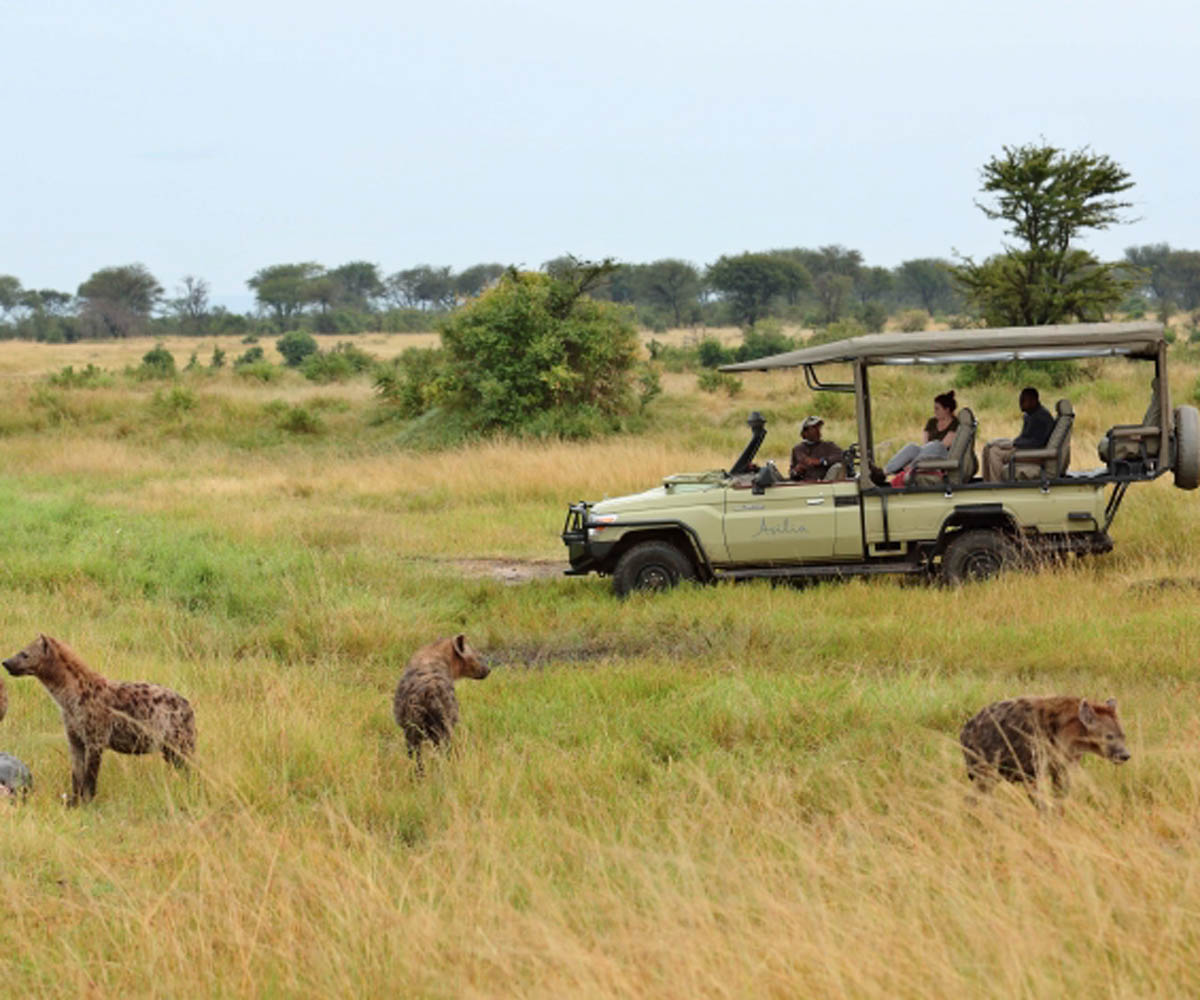
Open-sided safari vehicle. Copyright @Asilia
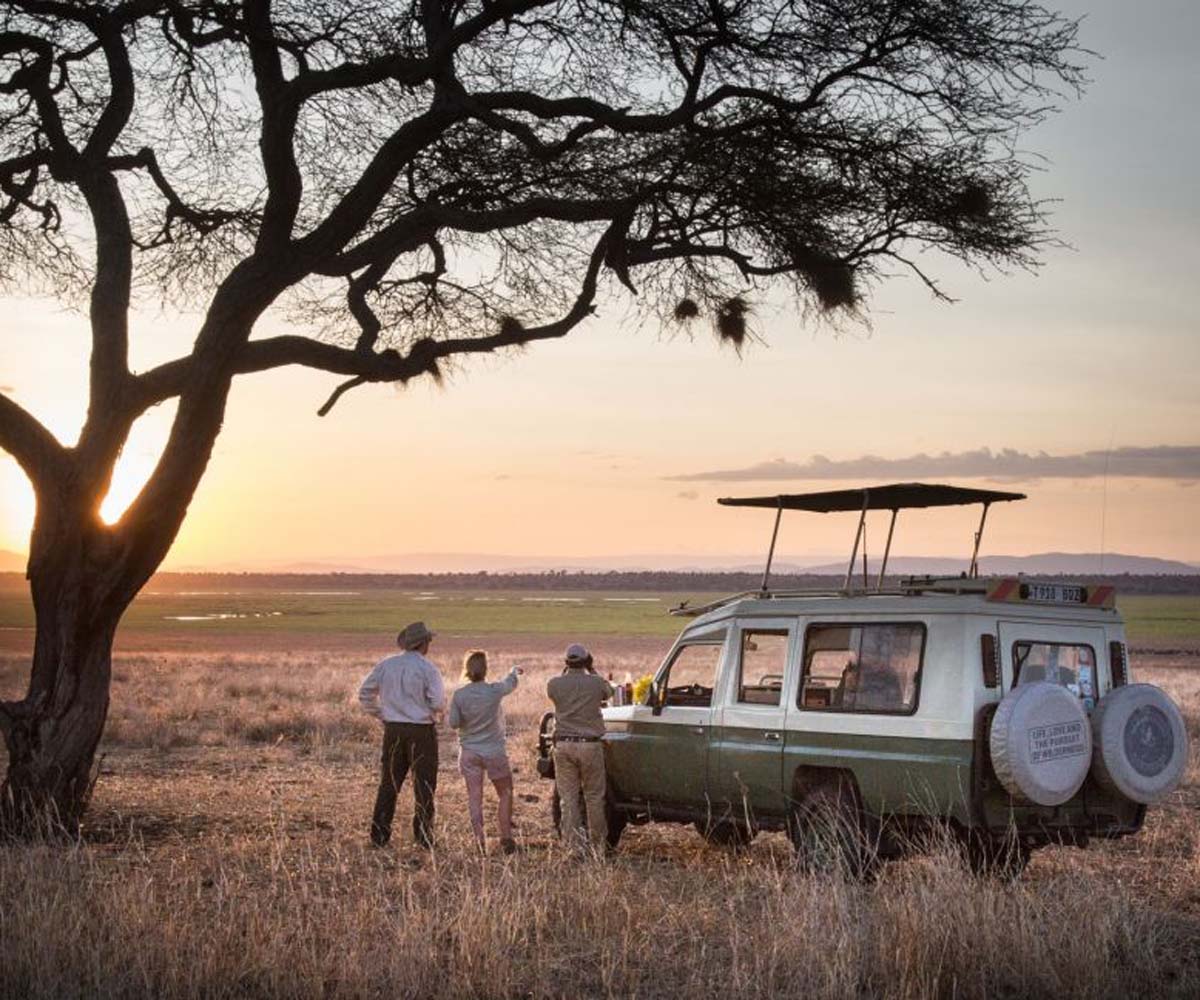
Closed-sided safari vehicle. Copyright @Nomad Safaris
Are open safari vehicles safe?
The short answer is, yes. Of course, any holiday where you are surrounded by wild animals can at times be unpredictable. Rest assured though, the guides you are with have the best possible training, and often years and years of experience out on game drives. They can sense what the animals are feeling, and if they feel as though one is showing signs of irritation, they will safety manoeuvre out of danger. Though, this is the same story with closed sided vehicles! The wildlife tends to see a vehicle, closed or open-sided, as one single block and they don[‘t distinguish individual people. As long as you listen to your guide – no standing up, abrupt movement and no loud noises when at a sighting , then you should be absolutely fine.
The best 4×4 safari vehicle
There is much debate as to whether Land Rovers or Land Cruisers offer the ultimate safari vehicle – this is a debated topic! Many people say Land Rovers are a better fit for the bush in wet season, as they are lighter so are harder to get stuck. Both are exceptional vehicles though, and very comfortable with 6 seats and both offer the best game viewing opportunities. Back in the old days, Land Rovers were the norm and if they broke, everyone knew how to fix them,. However, as they progressed they got more electronic and people moved away from them. At that time, Toyotas stole the market and now, most safari camps have Land Cruisers with only a few exceptions. Truthfully, Land Cruisers do offer slightly most comfortable ride.
Off road safari vehicles
In extreme conditions, do not fear – your guide’s vehicle would have thought of it! For example, the vehicles in the Okavango Delta have “car snorkels” as often they are driving through deep water as the floods are in full swing. Even if you did get stuck – don’t worry! Every guide has a radio and phone and are often in communication with other guides in the area – on safari, if someone is stuck, lots of people will rally to the cause. All part of the adventure!
Related Posts:
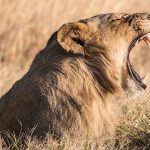
Related Articles
Visit Africa Odyssey at The Chaldicott Advent Fayre
Thirty rhinos translocated to akagera national park, the covid laundrette – avoid red list quarantine, kirkman’s kamp refurbishment, get ready to travel again – newsletter, covid 19 update, unique adventures with africa odyssey, the rhino crash and riding for rangers, honeymoon locations in africa, where to see your favourite african animals, the best camera to take on safari, where to see the animals from the lion king, south africa holidays, big 5 safari, our planet with africa odyssey, africa trips for couples, how much money should i bring on an african safari, a guide to safari clothing, how to choose an african beach destination, giraffe manor kenya: a guide, africa’s best tented safari camps, top 5 botswana lodges for 2019, african safari holidays for elderly people, 5 unique and wonderful experiences in africa, where should i go in africa for a luxury group safari in 2019, where to go in africa to see the wildlife from bbc dynasties, best countries for african safaris, dreamy desert safari destinations, should you bring children on safari, africa safari q&a – frequently asked questions about african travel, a guide to safari guides, a guide to africa’s green season, what you should look for when choosing your luxury safari accommodation, the benefits of an off-peak east african safari, a guide to night game-drives on an african safari, best christmas destinations in africa: festive season on safari, safari honeymoons in southern africa, life safari in the mountains of rwanda, east africa vs southern africa, african safari and beach accommodation, africa odyssey’s safari planning tips , a guide to mountain gorilla trekking safaris in east africa, breaking the code on giraffe genetics, a framily safari anyone (friends…who are family…), leaping to help madagascar’s lemurs, building camps in africa with a low carbon footprint, how tourism in africa is helping to end poverty, tips for planning a safari holiday, the royal honeymoon destination predictions, experience a walking safari in zambia, i missed the great migration because i forgot my binoculars, tips for dealing with mosquitoes while on a safari, honeymoon safari in africa, surfing safaris – best beaches for surfers in africa, tips for spotting wildlife on a self-drive safari, a baboon in the bedroom, swoon-worthy safari star beds, ngorongoro crater, serengeti national park, tarangire national park, botswana horseback safari, namibia – a photographer’s dream destination, islands off the coast of africa, stay where the wild things are, secret safari destinations you must see, 3 of the best (ethical) animal encounters in africa, african safari: the trip to take in your 30s, kruger vs. sabi sand: everything you need to know, how to make the most of your safari, video: 5 rare wildlife sightings you have to see to believe, 5 mind-blowing places to sleep in africa, the promised sands: could madagascar be the new maldives, 5 travel blogs to help plan your trip to africa, africa’s biggest ever black rhino relocation, 10 utterly bizarre facts about africa’s wildlife, praktica pioneer binoculars, help us to help destinations, say “i do” to a safari honeymoon, a poem: wilderness by ian mccallum, the magic of africa after sunset, reminiscing about running in the wild, the international mountain explorers connection, partnership with the seychelles tourism board, mulberry mongoose, a guide to the best beaches in the indian ocean, record-breaking turtle nesting seasons on north island, the ultimate african gap year, the tides of change, prince harry heads to africa, tanzania voted best safari country in africa, tanzania safari – the perfect family holiday, ras kutani wins award, please vote for us, africa’s top 10 safari camps, namiri plains, best new hotels – chinzombo, zambia, zanzibar: soak up culture and sun, how to plan an africa safari, reflections of a family safari in south africa, north island nostalgia…, the big six: tanzanian safari lodges, oyster bay; luxury hotel in dar es salaam tanzania, timberlake honeymoons in tanzania, selous safari company, safari tourist numbers infographic, exclusive summer discounts with africa odyssey, luxury serengeti wildebeest migration, zombies on kilimanjaro, by tim ward – may 2012, serengeti great migration update, great migration calving, zanzibar music festival, surprises, suspense on tanzanian safari, a luxury travel blog, best kept safari secrets, ruaha, tarangire: elephant paradise, sherini to give birth at abu camp, the ultimate christmas present, 7 wonders of nature: table mountain, full of surprises on safari, great migration serengeti – 1 november 2011, great migration serengeti, quilalea in mozambique re-opens, a beach for everybody in tanzania, nellying around in the african bush, tanzania safari – a guide, alternative african experiences: namibia, mount kilimanjaro marathon, indian ocean top hot spots, magical moonbows in zambia, pack for a purpose with africa odyssey, mdonya old river camp, trip report okavango horse safari- by sarah ward, flo’s trip report: kwihala, selous impala camp, top africa honeymoons, flo’s trip report:selous impala flycamp, flo’s report: lake manze, selous, serengeti migration spectacle under threat, hd videos from ted’s latest trip to tanzania, the residence zanzibar, ted’s latest trip report, live the dream on mnemba island, pemba – ted’s trip report, ted’s fam trip: selous, pemba, zanzibar, vamizi island – top for romance, royal honeymoon location – north island, north island seychelles: barefoot luxury, introducing pack for a purpose, royal honeymoon: fit for a prince, serengeti highway proposal, walk on the wild side in tanzania, are you game for a tanzanian safari, traveling to the north island, tanzania’s beach options, 10 things to do for free on zanzibar island, the serengeti’s mobile camps., wild and wonderful time on a safari in tanzania, the great migration, mozambique visa increase, zanzibar – yellow fever requirement, family safari holiday adventure, ruaha national park: untouched, great migration update, brian jackman in the serengeti, ruaha national park, chris welsch, zanzibar film festival, the selous game reserve, private safari in katavi, a connoisseurs choice, exploring zanzibar – by annabel skinner, lake manze camp, wildebeest migration, seeing the serengeti on foot, safari in the selous, on safari in tanzania, tanapa improves tanzanian guides, tanzania: rhinos from czech republic, serengeti in june: the great migration, singita’s sabora tented camp, serengeti wildebeest migration secrets, a new star in the serengeti, africa: dive of a lifetime on pemba island, ultimate safari and beach trip: tanzania, crocs, canoeing and camp adventures, chimps and elephants: nomad’s wild west.
Your Timeless Journey Awaits...
Looking for something specific? Search our African destinations, trip ideas and experiences.

- Destinations Destinations
- Experiences Experiences
- Travel Styles Travel Styles
- Trip Inspiration Trip Inspiration
- Our Journal Our Journal
- Destinations
- Experiences
- Travel Styles
- Trip Inspiration
- Our Journal
- Our Timeless Story
- Why Book With Us
- Meet The Team
- Conservation & Sustainability
- Ambassadors Initiative
- Natural Events
T: +27 21 461 9001

A Guide to Safari Vehicles in East and Southern Africa
Image supplied by Governor's Camp
Exploring the Wilderness: A Guide to Safari Vehicles in East and Southern Africa
Embarking on a safari in the expansive landscapes of East and Southern Africa is an exhilarating journey into the heart of the wild. Let’s delve into the world of safari vehicles, each offering a unique perspective on the breathtaking scenery that unfolds before your eyes.
- Vehicle Types
Open Safari Vehicles
- Closed Safari Vehicles
In Southern African countries like South Africa, Botswana, Zambia, and Zimbabwe, open safari vehicles take center stage. These vehicles, characterized by their lack of roofs or side windows, provide an unobstructed view of the surroundings.
This configuration offers an immersive wildlife experience, allowing you to feel the cool breeze and become enveloped in the natural sounds of the wilderness. Perfect for photography enthusiasts, open-sided 4×4 Land Cruisers and Land Rovers, often with tiered seating, are the vehicles of choice.
Despite their openness, many of these safari vehicles are equipped with permanent sunshades (roofs), ensuring passengers stay shaded from the intense African sun.

Closed Safari Vehicles:
In East Africa, particularly in destinations like Kenya and Tanzania, closed safari vehicles become the preferred mode of exploration. This choice is influenced by restrictions on open vehicles in certain areas, such as roads between national parks and specific park regions like Tanzania’s Ngorongoro Crater.
Safety is paramount, especially on regular roads where open-sided game viewing vehicles are impractical. Additionally, in parks with thriving cheetah populations, closed vehicles offer a secure vantage point for observing these agile hunters.
Most safari destinations in East Africa boast extensive road networks, making closed vehicles the norm for long-distance transfers between airstrips, camps, and lodges. A typical closed game drive vehicle features three rows of seating and a pop-top roof hatch that can be raised for optimal game viewing and photography.
In private wilderness areas, where off-road exploration is the norm, more open configurations are prevalent. These vehicles often feature a canvas roof and adjustable flaps covering the windows, providing a harmonious balance between openness and protection in the untamed wilderness.

Elewana Collection

- Our Top Ten Tips
- Choose Your Seat Wisely:
- Younger children will love the front seat next to the field guide, providing an up-close view of the wildlife.
- Be aware that the top tier or back seat row can be bumpy, so consider this when selecting your spot.
- Embrace the Adventure:
- There’s nothing quite like an early morning snooze on a rolling safari vehicle. The gentle movement and sounds of the wilderness create a unique and peaceful experience for both the young and the young at heart.
- Perfect Photography Spot:
- For stunning wildlife photos, claim the tracker seat in the front. This prime spot offers an unobstructed view, ensuring you capture the beauty of the savannah without interference.
- Capture the Moment:
- If you’re traveling with a group or family, take advantage of the opportunity to capture the quintessential family photo around and on the safari vehicle. These memories will be cherished for a lifetime.
- Stay Organized:
- Utilize the convenient pockets at your knees, or in the middle row, to keep your essentials organized and easily accessible. This ensures you can focus on the wildlife without searching for your belongings. This includes items such as binoculars, sunscreen, water bottles and bird books.
- Treasures on Board:
- Discover the wonders of the safari vehicle’s “boot-type” storage, where treasures like coffee, biltong, amarula, and other delights are stowed. It’s a delightful surprise that adds to the overall safari experience- sunrise and sunset stops, when these are unpacked, are simply the best!
- Arrive Early for the Best View:
- In some vehicles, the front row may be obstructed by a raised windshield. Ask your field guide if this can be lowered.
- If you’re sharing a vehicle, arriving early allows you to secure your favorite spot for optimal viewing.
- Engage in some radio fun during your safari adventure. Some guides may allow guests, especially children, to make radio calls – advising the lodge of your return, adding an interactive and educational element to the journey.
- Prepare for the cool mornings by bundling up with a beanie and blanket. There’s a unique charm in experiencing the crisp morning air while wrapped in warmth, creating a cozy and memorable safari atmosphere.
As you embark on your safari adventure with Timeless Africa Safaris, rest assured that our experienced guides will provide a set of binoculars, a bird book, a blanket in winter, and, in some instances, a hot water bottle for those chilly early morning drives. A top tip for the adventurous: the back-row bench offers the bumpiest ride, so if you crave a bit of excitement, those seats are for you!
In this article
- Introduction
Discover Our other travel stories
Read our travel stories for inspiration and updates.

10 Incredible and Unique Accommodations in Africa
Africa offers many incredible places to stay, from luxury safari camps and plenty of glamping options, to boutique hotels and farm stays on wine estates. If you are looking for unique experiences in unusual accommodations, we’ve compiled a list of some of the unique places to stay in Africa, where nature influenced the architecture and […]

Exploring Mana Pools with Robin
Mana Pools, is a hidden gem located along the meandering banks of the Zambezi River, bordering Northern Zimbabwe and Zambia, discover it with me…

A Day on Safari
We are often asked what a typical day on safari will be like. Your day is filled with many pinch-me-moments and below we give you just a glimpse of what awaits you on ‘another tough day in Africa’.

A Walk of Ancient Wisdom in Botswana
An Exclusive 7-Day Walk with the San Bushmen from 7-13 June 2024

Astro Safaris in Africa
Have you ever wondered what the night sky looks like in Africa? When you live in a big city with light pollution, it is easy to forget there is a whole universe of galaxies out there.

Can AI replace the need for Human Intelligence in Travel?
As the world gleefully throws itself into the brand-new era of artificial intelligence (AI), I take comfort in the underlying message of the blockbuster 80’s film The Terminator: ‘There is always hope for mankind’.

Life’s a Beach on Africa’s Coastline
We explore the breathtaking beach holiday destinations of mainland Kenya, Mozambique, and South Africa.

Collective Nouns For African Animals
Get to know the collective nouns for these popular African Animals…

Embracing the Wild and Savage Beauty of Safari Adventures
A ‘kill’ is seen as the ‘holy grail’ of a safari experience, but it can be quite an emotional experience for us as humans.

Glamping in Africa
A fusion of glamour and camping, glamping is a way to authentically experience the most awe-inspiring safari destinations. There is something enchanting and romantic about an African safari experienced ‘under canvas’ in a luxury safari tent.

The Enchanting Landscapes of Iceland
I had an opportunity to explore the region known as the Golden Circle, which incorporates spectacular countryside, epic waterfalls, powerful geysers, bubbling pools, lava fields and rugged cliffs.
You are using an outdated browser. Please upgrade your browser to improve your experience.
Looking for a unique destination for your next holiday? Try St Helena!
What to expect from your safari vehicle.
A useful guide to safari vehicles. Whats the difference, and where are they used?
04 May 2018
17 nov 2020.
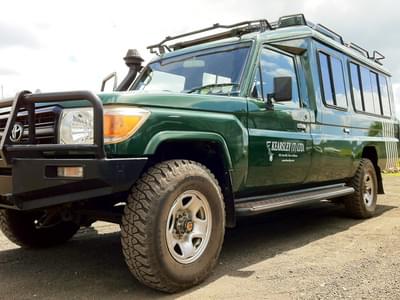
Safari vehicles vary from camp to camp, and country to country. In this guide we want to show you an example so you know what to expect. On the whole there are 2 main types of vehicle. 'Closed' vehicles, which are mainly used in Eastern Africa ( Kenya , Tanzania , Rwanda , and Uganda ). 'Open' vehicles tend to be used in Southern Africa ( Botswana , Namibia , South Africa , and Zambia ).
'Closed' Vehicles
Most Safari vehicles are Land Rover Defenders and Toyota Land Cruisers, seating up to seven guests plus your driver. They are designed to maximise wildlife viewing in the National Parks as well as comfort on the roads in-between the parks. The below seven seat vehicles have special features including window seats for all passengers, as well as a pop-up roof so that you can stand up and get an amazing unobstructed view of the animals.
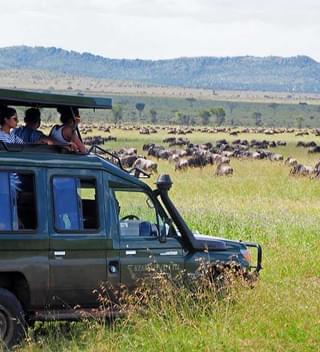
'Open' Vehicles
Where long journeys by road aren't required for your safari, most of southern Africa, open sided vehicles tend to be used. These 4x4's are normally Land Cruisers, or Land Rovers. Open sided vehicles have their advantages. It's much easier to capture photos and the experience seems much closer. If shade is needed most vehicles will have sunshades.

Whatever sort of vehicle you're in you'll have an amazing safari, for more inspiration, check out our 26 best safari ideas or call our team on 01768 603 715 and they'd be happy to help.
If you're planning you're researching your first safari, you might also want to take a look at our guide on 'where to go on my first safari ' or big five safaris.
Our Favourite Tailor Made Africa Holidays
Popular Holiday Ideas
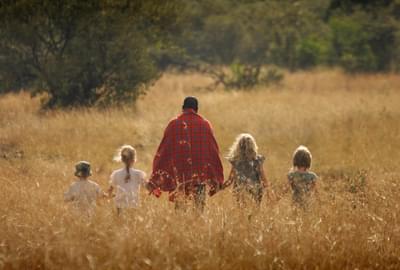
Classic Kenya Family Safari & Beach Holiday
- Diani Beach
- £5870 PP
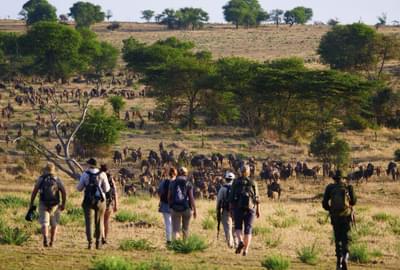
Walk, Mountain Bike & Drive Northern Tanzania
- £5495 PP

Luxury Masai Mara Safari & Zanzibar Honeymoon
- £3245 PP
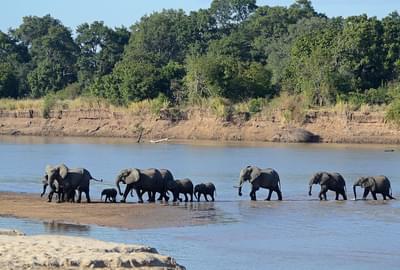
Luangwa and Lake Safari Adventure
- South Luangwa
- Lake Malawi
- £4945 PP

Rwanda Gorillas, Primates, & Landscapes
- Volcanoes NP
- £6075 PP
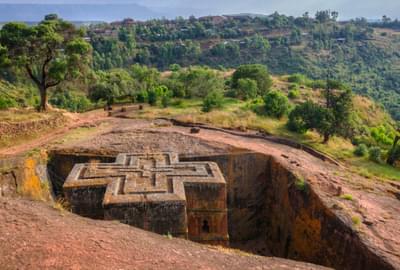
Historical Ethiopia
- Addis Ababa
- Simien Mountains
- £3515 PP
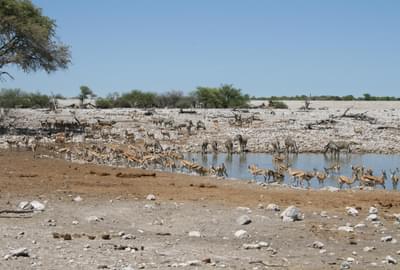
Classic Namibia Self-Drive
- £4715 PP
Start Planning Your Dream Safari
Speak To Our Experts Today

African Specalist

Africa Specialist
Call an expert on
01768 603 715
CONTINUE READING...
More Safari Blogs
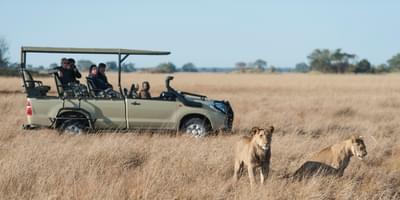
Where to go on safari 2024/25
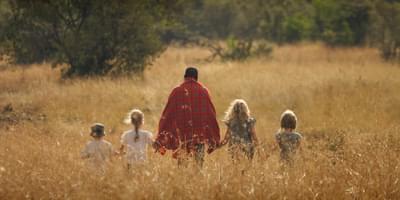
Best Family Safari Holidays 2024/25
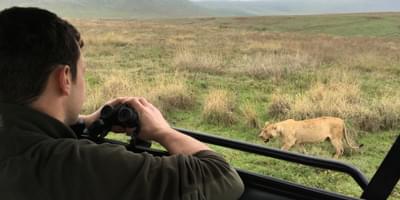
Jack shares his first safari experience in Tanzania
Far & wild customer reviews.
See what our customers have to say about us...
I didn't realise my high expectations could be so easily exceeded
Hannah and Elaine travelled to Kenya in November 2023 on a trip organised by .
It was SO NICE to have someone else do it for me.
Cathy travelled to Tanzania and Zanzibar in December 2023 on a trip organised by Alistair .
I've already recommended Far and Wild to a couple of friends
Paula travelled to South Africa in December 2023 on a trip organised by Alistair .
100% value for money
Adam travelled to Kenya in January 2024 on a trip organised by Ruth .
Adventure of a Lifetime in Kenya
Maria travelled to Masai Mara Safari in October 2023 on a trip organised by Ben .
A dream to visit Mum's birth place!
Christine travelled to St Helena Holidays and South Africa in December 2023 on a trip organised by .
Plan with an expert
Have a look at our original holiday experiences and then contact us with your brief, or call 01768 603 715
A tailor-made itinerary just for you
Our experts will send you a detailed holiday itinerary specified to your desires. It's our service promise to you.
Value guarantee
Tailor-made doesn't mean expensive! Ask about our price promise and book with financial security.
Thank you for making an enquiry
Our travel experts will be in touch soon. Feel free to call us on 01768 603 715.
Start planning your next adventure
Give us a call on 01768 603 715 , chat with an expert instantly on WhatsApp or fill in the form below and we’ll be in touch.
Tell us about you...
Tell us about your trip….
Please enter your comments.
- Meet the Team
- In the News
- Safari Itineraries
- Sustainable Travel
- Come With Us
- South Africa
- Happy Travelers
- Travel Advisor Portal
- Client Log In
Safari Vehicles 101

WHAT ARE THE TYPES OF SAFARI VEHICLES?
There are two main types of safari vehicles — open and closed. While open safari vehicles live up to their name, generally with three rows of tiered seating and completely open sides, closed safari vehicles are a bit more nuanced. They have closed sides (as you see in the picture above), but the tops pop open so safari-goers can stand up to get a better view. Windows also slide open so that travelers can take photos unimpeded.

LOCATION, LOCATION, LOCATION
The type of vehicle that will be used for a safari often has to do with WHERE that safari is taking place and is not just a random happenstance. The basic rule of thumb is that in Southern Africa (South Africa, Zimbabwe, Zambia, Botswana, and Namibia) you’ll find more open vehicles, while in Eastern Africa (Uganda, Rwanda, Kenya, and Tanzania), vehicles are more closed.

Well, in Southern Africa, most camps are in private concessions and thus have fewer rules and regulations, meaning they can have more open vehicles. In East Africa, there are more regulations about where open vehicles can be used — they’re not permitted when driving between national parks or even in some national parks (Ngorongoro Crater, for example). So, you won’t see as many open vehicles in East Africa.
Plus, any time you have a longer road transfer, you’ll be using a closed vehicle, since you really don’t want to drive for hours exposed to the elements the way you would be in an open vehicle.

ROAD TRANSFERS VS. CHARTER FLIGHTS
While there isn’t much opportunity for choice when it comes to which vehicle you will be using for your safaris, if you are in closed vehicles due to road transfers, it is sometimes possible to substitute charter flights, allowing you to do game drives in a camp’s (open) safari vehicles. But this varies greatly based on location, so if this is a concern, let us know and we’ll see how we can adjust!

PROS AND CONS
While, for the most part, we recognize that open vehicles are better suited for wildlife viewing, closed vehicles truly don’t take away significantly from the experience. It is a different experience, but you can still see and photograph the wildlife, and with the excellent guides we work with, you’re going to get up-close-and-personal with the animals either way. Maybe there are even a few advantages — like air conditioning (sometimes), protection from the elements, and even a refrigerator that keeps drinks cool for the hot afternoons.
When you’re ready to plan your trip, we’d love it if you’d reach out for our assistance! Click the button below to get started!
One Comment
Will be leaving to South Africa on 02.09.24 through Paris and including safari tour Looks like closed vehicles are more preferable..
Leave a Reply Cancel reply
Your email address will not be published. Required fields are marked *
Save my name, email, and website in this browser for the next time I comment.
Privacy Overview

- 3 Days Uganda Gorilla Habituation Safari
- 3 Day Uganda Luxury Gorilla Trek
- 3 Days Murchison falls National Park
- 3 Day Chimp Tracking in Kibale
- 3 Days Uganda Safari to Sipi
- 4 Day Luxury Uganda Gorilla Trek and Lake Bunyonyi
- 4-Days Queen Elizabeth & Lake Mburo National Park
- 4-Days Gorillas and Lake Bunyonyi
- 4 Days Uganda Gorilla Trekking and Wildlife Tour
- 4-Day Gorillas, Golden Monkeys & Chimpanzee Safari Combo
- 5 Days Kampala City and the Nile River Safari
- 5-Day Short Holiday Package to Uganda – Gorilla Trekking
- 5 Days Uganda Chimpanzee tracking Safari
- 5-Day Kidepo National Park Galore
- 6-Day Value for Money Gorilla, Chimp Treks Wildlife Tour
- 6 Days Uganda Great Apes Safari
- 6 Days Wildlife Safari Murchison Falls & Chimpanzee Trekking
- 6 Days Murchison Falls and Chimpanzee Trekking with Wildlife Safari
- 6 Day Tour Package for Gorilla Trekking in Uganda
- 6-Day Uganda Holiday Safari to Murchison Falls National park and Semiliki NP
- 7 Day Uganda Safari.
- 7 Day Uganda Birding Safari
- 7 days African safari holidays
- 8 Day Luxury Uganda Gorilla Safari
- 8-Day Uganda Great Apes Safari
- 8 Days Best of Mountain Rwenzori Hiking Safari
- 8 Day Kidepo & Murchison Wildlife Safari
- 9 Day Uganda Flying Safari
- 9-Day Luxury Epic Tour of Uganda
- 9 Day Uganda Chimpanzee Tracking Safari
- 9 Days Bwindi, Queen, Kibale, Murchison Falls Tour
- 10 Day Uganda Deluxe Safari
- 10 Days Mountain Rwenzori Trekking & Hiking Adventure
- 10-Day Mountain bike Adventure in Western Uganda
- 10-Day Yoga and Wild Life Adventure
- 10 Day Uganda Gorilla Safari
- 12 Days Safari Holiday in Uganda
- 12 Days Uganda Gorilla Safari Holiday
- 13-Day Rwenzori Mountain and Bwindi Gorilla Safari
- 13 Day Uganda Gorilla Trekking, Tanzania wildlife and Zanzibar beach experience
- 14 Day Explore Uganda Safari
- 14 Days Uganda Gorilla Trekking & Rwanda Safari
- 15 Day Best of Uganda Safari
- 16 Days Birding the Forests of Uganda
- 20 Days Discover Uganda
- 24-Day Best of Uganda Wildness Adventure
- 2-Day Rwanda Mountain Gorilla Tour Experience
- 3 Days Nyungwe Chimpanzee Trekking Safari Rwanda
- 3 Day Rwanda to Uganda Gorilla Trek
- 3 Days Akagera Wildlife Safari Rwanda
- 4 Day Rwanda Gorilla Trekking & Golden Monkeys
- 5-Day Remarkable Rwanda Primate Tour
- 6-Day Rwanda Wildlife and Cultural Vacation
- 7-Day Rwanda Gorillas and Wildlife Safari
- 7 Day Rwanda gorillas and Zanzibar beach safari
- 11 Days Rwanda Gorillas and Maasai Mara Safari Kenya
- 3 Days Maasai Mara Mid-Range Tour.
- 3 Days Ol Pejeta Conservancy Safari
- 4-Day Wildebeest Migration at Its Best
- 4 Days Walking Safari In Samburu Game Reserve
- 7 Day Maasai Mara-Lake Naivasha-Lake Nakuru & Amboseli Safari
- 7-Day Luxury Safari in Kenya
- 7 Day Safari (Including Maasai Mara) & Mombasa Extension
- 7Days Best of Kenya Safari – Big 5 Migration Safari 2023
- 8 Days Kenya Safari Tour
- 8 Days Kenya and Tanzania Safari Holiday
- 9 Day Mara to Swahili Coast
- 9 Day Big Cats Safari with First Night in Nairobi
- 10 Days Combined Safari Gorilla Trekking and Wildebeest East Africa
- 10 Day Kenya Uganda Safari Adventure
- 10 Days Best of Kenya Wildlife Adventure Safari
- 10 Day 3 Parks + Beach Kenya Southern & Coastline Circuit
- 12 Day Ride, Walk and Surf Kenya
- 3 Day Serengeti Wildlife Safari
- 3 Day Safari to Ngoro Ngoro Crater
- 3-Day Comfortable Safari for Children
- 5-Day Best of Northern Tanzania
- 6-Day Offer Luxury Safari to Tanzania Wildlife Parks
- 8-Day Tanzania Luxury Big Cats Safari Tour
- 7 Day Rwanda gorillas and Zanzibar beach safari
- 8day Tanzania Luxury Safari Holiday
- 9 Days Kilimanjaro Tanzania Safari Tour
- 10Day Bwindi Gorillas and Mafia Island
- 10 Days Wildlife Safari to Tanzania
- 11 Days Uganda Gorilla Trekking + Tanzania Wildlife Safari
- 12 Days Luxury Tanzania Family Safari & Beach
- Bwindi Impenetrable Forest National Park
- Murchison falls national park
- Lake Mburo National Park
- Queen Elizabeth National Park
- Kidepo Valley National Park
- Kibale Forest National Park
- Semuliki National Park
- Mgahinga Gorilla National Park
- Mountain Elgon National Park
- Mountain Rwenzori National Park
- COMPANY PROFILE
- Our Terms & Conditions
Exploring the Safety of Safari Vehicles: A Comprehensive Guide

Exploring the Safety of Safari Vehicles, When embarking on a thrilling safari adventure , safety should be a top priority. Safari vehicles play a crucial role in ensuring the safety of both passengers and wildlife enthusiasts. In this guide, we will delve into the essential aspects of safari vehicle safety, offering insights that will help you make informed decisions when planning your next safari expedition.
The Anatomy of a Safe Safari Vehicle
1. Robust Construction:
- Discuss the importance of sturdy vehicle construction to withstand rugged terrains and potential encounters with wildlife.
- Highlight the benefits of roll cages and reinforced structures.
Elevated Seating:
- Explain the advantages of elevated seating for better visibility during game drives.
- Mention the types of vehicles commonly used in safaris, such as open-top Land Cruisers or 4×4 safari trucks.
Pop-Up Roofs:
- Describe the utility of pop-up roofs for unobstructed wildlife viewing and photography.
- Emphasize the convenience of these roofs for changing weather conditions.
Chapter 2: Safety Features in Safari Vehicles
Seat Belts and Restraints:
- Stress the importance of seat belts for all passengers.
- Discuss additional restraints like harnesses for photographers and child safety seats.
First Aid Kits:
- Explain the necessity of well-equipped first aid kits on board.
- Provide a checklist of essential medical supplies for safari excursions.
Communication Devices:
- Discuss the role of radios or satellite phones in case of emergencies.
- Highlight the importance of being in contact with the safari camp or ranger station.
Chapter 3: Driver Training and Expertise
. Experienced Guides:
- Emphasize the significance of having knowledgeable safari guides.
- Explain how guides are trained to handle different situations in the wild.
. Defensive Driving:
- Discuss the importance of defensive driving techniques.
- Describe how guides are trained to avoid disturbing wildlife while ensuring a memorable experience.
Chapter 4: Environmental Considerations
4.1 . Minimizing Impact:
- Explain how responsible safari operators minimize their ecological footprint.
- Discuss the importance of staying on designated trails to protect fragile ecosystems.
Eco-Friendly Vehicles:
- Highlight the use of low-impact, fuel-efficient vehicles in eco-conscious safaris.
- Discuss the benefits of electric or hybrid safari vehicles where applicable.
Chapter 5: Regulations and Standards
National and International Standards:
- Discuss the role of government regulations and international standards in ensuring safari vehicle safety.
- Mention certification programs that validate the safety and quality of safari operators.

Chapter 6: Booking Safaris with Safety in Mind
Research and Due Diligence:
- Provide tips for travelers to research safari operators.
- Encourage travelers to ask about safety measures before booking.
Reading Reviews:
- Highlight the importance of reading reviews and testimonials from previous safari-goers.
- Explain how firsthand experiences can inform safety decisions.
Conclusion
In this comprehensive guide, we’ve explored the critical aspects of safari vehicle safety. By understanding the construction, safety features, driver expertise, environmental considerations, and industry regulations, you can embark on your safari adventure with confidence, knowing that safety is a top priority for responsible safari operators. Remember, safety enhances your enjoyment of the breathtaking wildlife and landscapes that make safaris a once-in-a-lifetime experience.
Leave a Reply Cancel Reply
Save my name, email, and website in this browser for the next time I comment.
Recent Posts
- Exploring Uganda’s Primate Paradise: Where to See Chimpanzees
- Witness the Majestic Dance: Dolphins Breaching off the Coast of Zanzibar Island
- A Majestic Encounter: Spending Blissful Hours with Mountain Gorillas in Uganda
- Witness Nature’s Majesty: Catch a Pod of Hippos Sunning Themselves in Kazinga Channel
- “Discover East Africa’s Wildlife Wonders: 10 Must-See Animals on Your Safari Adventure”
- February 2024
- January 2024
- August 2023
- November 2022
- October 2022
- January 2022
- African Luxury Safari Tours & Holidays
- Travel Blog Africa
WhatsApp us

- Client Reviews
- Safari Blog
- Send an Inquiry
- Map of Africa
- Contact Details
- African Safari Cost
- Travel Insurance
- You are here
- The Budget Safari Blog
- Types of Safari Vehicles,…

Types of Safari Vehicles, Overland Trucks & More: 14 Best Ways to Explore Africa
Posted by Briony Chisholm on September 16 2022 in Adventure Travel & Activities Enquire Now!
So you’re going on a safari to see the open plains and incredible wildlife of Africa? One of the most important details to check, before booking your trip, is what types of African safari vehicles, overlanding trucks, and other forms of transportation are used.
The range of safari vehicles is enormous. From walking safaris with enclosed transfer vehicles to pop-top 4X4 safari vehicles, and from 4-seater to 44-seater overland trucks. You can go bare-bones or air-conditioned high-luxury, local dugout mokoro, horseback, or air safaris for a bird's eye view. The important thing is to choose the type of African safari vehicle or overlanding truck, and other means of exploring (or combination) that suits you, for the ultimate African safari experience.
We’ll start with the biggest African safari vehicles and end with the ‘on foot’ transportation mode.
Safari Vehicles, Overland Trucks & Ways to Explore Africa - Quick Links
- Overlanding Vehicles (Overland Trucks)
- Minibus or Microbus Safari Vehicles
- Land Rover & Cruiser Safari Vehicles
- Open Game Viewing Safari Vehicles
- Flying African Safaris
- Hot Air Balloon Trips
- Shark Cage Diving Boats
- Rubber Ducks
- Dhow Sailing Boats
- Game Viewing Boat Cruises
- Mokoro Dug-out Canoes
- Kayak & Canoe Safaris
- Horseback & Camel Safaris
- Walking Safaris (on foot & by vehicle)
1. Africa Overlanding Vehicles (Overland Trucks)

These expedition trucks are specially built to deal with the rough roads of Africa, where potholes, deep ruts, and river crossings are pretty ‘every day.’ They are normally used for longer and larger (12 to 44 people) overland Africa tours, so need to be able to carry a fair amount of equipment while still offering the budget traveller a relatively comfortable trip and good views of the passing scenery and wildlife.
African tour operators choose the best overland truck for each trip, according to the area being visited and the anticipated terrain that will be covered.
Overland Vehicle Seating Arrangements
Overland trucks may differ in their seating formation and size. Some have all forward-facing seats, while others may have some backward- or side-facing seats. The seats are generally raised, allowing for good views over the African landscapes, especially in grassy areas, where you want to be able to spot animals in the grass. Ask your tour operator about seating formation and how many are seated in a row – some overland trucks seat up to three per row, which makes seeing out a bit more difficult if you’re in the middle – before booking your overland tour.

Windows, Pop-up Roofs, and Taking Photos on Overland Trucks
The overland trucks generally have large windows, some of which open vertically, others horizontally – allowing for good views. Many of them also have a pop-up roof. This allows you to stand up and get 360-degree views and photos.
Luggage Space on Overlanding Trucks
All overland trucks are equipped with storage space (some lockable) for luggage and equipment – some under the seating section, others at the back of the truck, and some with a detachable trailer. Obviously, space is at a premium, so be sure to pack only the absolute essentials. Also, when packing, use soft luggage rather than hard (e.g. Samsonite), as it is much easier to fit into lockers and overhead compartments.
Most overland trucks have a safe onboard for the storage of valuables.
Mobile Kitchen & Diner
Many meals while on safari are prepared and eaten out in the bush, far from civilization. The overland trucks are fully equipped for this. Most safari trucks have a ‘kitchen’ section (often fold-out, beneath the seating area) with a stove and hand dish-washing area. They also have a fridge/freezer/cooler boxes to keep supplies and drinks fresh in the African heat. Africa Overland Tours are thirsty work!
Safety First on Safari!
Safety is non-negotiable. Check with your tour operator that there is a fully-stocked First Aid kit onboard, safety belts on all seats, and some means of communication (radio, etc.), in case of emergencies while on safari. All legitimate tour operators have their client’s safety first in mind and ensure that their overland trucks are kept in a good condition and are reliable for long trips – larger fuel and water tanks, spare tyres, knowledgeable and well-trained drivers, etc.
Overland Truck Gadgets
Modern overlanding trucks come fully equipped with the modern gadgets that we've all got used to. With iPod/MP3 points, you can listen to your own soundtrack as you watch the African landscape slide by. They also have onboard charging facilities so ensure that your camera remains fully charged and you don't lose that once-in-a-lifetime shot of a lion hunting his prey!

Some smaller tours use smaller overland trucks – seven to nine-seaters – which provide window seats only, so nobody has to be in a middle seat.
Luxury Overlanding Trucks
These are state-of-the-art 4x4 overland vehicles used on small-group overland tours. A custom-built luxury overland truck comfortably accommodates up to 12 guests. They are specially designed to provide extra space and amenities. This is the overland vehicle of choice for a more luxurious overlanding Africa experience with all the adventure in added style and comfort.
Features include an onboard toilet and a water filtration system for purified drinking water on the road. The luxury overland trucks have reclining leather seats that rotate 180 degrees and lock into your preferred position (for example, window or front-facing).

Each seat has overhead air-conditioning vents that can be independently operated for individual control of airflow and temperature. Every seat also features a USB port panel for charging your electronic devices and there is a reading light above each seat. Each seat has a safety deposit unit with individual key code access, for storing your passports, phones, and smaller valuables.
Recommended Africa Overland Tours
20-Day East African Overland Tour - South or 20-Day Cape Town to Victoria Falls Overland Tour - Camping Safari
Best of Namibia Safari Adventure - Overland Camping Tour
Small Group Tours in Luxury Overland Trucks: South Africa Safari Adventure , Delta & Chobe Safari Adventure & Explore Namibia Safari Adventure
More Overland Africa Tours
2. Minibus or Microbus Safari Vehicles
For smaller safari groups and shorter tours that don’t go through hugely rugged areas, adapted microbuses (or minibuses) are used. As safari vehicles, Toyota Quantums and Mercedes Sprinters are most commonly used. The optimal number in most of these safari vehicles is six to ten people, forward-facing.

When booking a safari, find out from the tour operator which safari vehicle is used, and how many window seats there are, to ensure that everybody gets a window seat and has a good view of the spectacular scenery and amazing animals of Africa.
These safari microbuses are specially adapted for safari travel and are generally equipped with GPS tracking, sliding windows, cooler boxes, fire extinguishers, and First Aid kits. They generally have a softer suspension than other safari vehicles, giving a slightly more comfortable trip. Many of them – especially on Kenya Safaris – also feature pop-up tops, allowing travellers to stand and view/photograph the countryside and animals from the minibus.
Some minibuses are fitted with air-conditioning. This is a welcome relief from the sweltering African heat but may detract from the whole experience of Africa, as the windows will be closed, blocking out the sounds of the bush.
Recommended small group trips using minibus safari vehicles
5 Days Budget Masai Mara & Lake Nakuru Camping Safari
South Africa’s Garden Route Adventure Tour
3. Land Cruising Safari Vehicles

Land Cruisers and Land Rovers are used on many safari tours. They range from ‘bare-bones’ models i.e. no added ‘mod-cons’, to highly specialized vehicles that may include air-conditioning, MP3 players, and slightly tinted windows for protection from the sun. Some of the newer safari vehicle models also have pop-up roofs, for added viewing potential, especially in Tanzania.
Safari Vehicle Seating Arrangements
These safari vehicles, in general, can carry four to six (extended version) passengers, all forward-facing. Check the seating configuration with your tour operator before booking. While extended safari vehicles can carry more people, they tend to be slightly more difficult to handle on the road. Most of the Land Cruisers are 4X4s, allowing travel over the rough terrain that Africa is known for… Have a look at images of the road into the Ngorongoro Crater if you want an idea!
While self-hire safari vehicle options are available, tour operators all have experienced drivers who, more often than not have extensive knowledge not only of handling the rough terrain but of the areas through which we travel.
Safety First on Safaris!
Most Land Cruisers are equipped with all possible safety features – fire extinguishers, First Aid kits, seat belts and many have airbags. They have specially designed fuel tanks to allow the economical use of diesel during long journeys and snorkels for travel through rivers.
Luggage Space & How to Pack (light)
In general, luggage is taken either in a trailer or packed on the roof, to keep the safari vehicle as uncluttered as possible inside, for your comfort. Remember to pack lightly!
Recommended 4x4 Trips in Land Cruiser Safari Vehicles
Tanzania Lodge Safari to Serengeti, Ngorongoro & Tarangire
Masai Mara, Samburu, Nakuru 4x4 Kenya Lodge Safari
4x4 Ethiopia Tour - Danakil Depression & Awash National Park
4. Open Game-Viewing Safari Vehicles

Within many of the game parks, smaller, open-sided, or completely open safari vehicles are used for game drives. While these are not suitable for long distances – wind, dust, sun, and Africa’s elements can be harsh! – they are great for game drives as they allow you to get up close and personal with the sights, sounds, and smells of the African bush.
These safari vehicles are most often adapted Land Cruisers which seat between six and nine passengers. Some are designed with tiered seating so that nobody’s view is blocked by the person in front of them’s head!

Protection from The Elements
Due to their being open to the elements, it is vital to protect yourself against the African sun. Hats, scarves, and windbreakers are all excellent shields from fiery hot UV rays. Many of these open safari vehicles do have canvas/plastic canopies that can be closed if the weather becomes uncooperative. Thunderstorms in Africa can be wild, and come on within minutes!
Safari Drivers & Trackers
Most often when going on game drives, there will be a driver and a tracker (often sits on the front of the car, allowing him to track spoor and dung.) The trackers are highly experienced, and allow one to see the best Africa has to offer in wildlife.
Recommended trips with open game-viewing
Chobe, Moremi & Delta Botswana Camping Safari
6-Day Kruger Park & Private Game Reserves Safari (Lodge)
5. Bird’s-Eye View Flying Safaris

‘Air safaris’ are offered at various places in Africa, like Victoria Falls and the Okavango Delta . A flight over the delta in a small plane gives you an idea of the vastness of the area. A helicopter flight over Victoria Falls will make you feel like an eagle soaring above this spectacular area!
Helicopters on Safari
The ‘vehicles’ used differ from operator to operator. The helicopters used at Victoria Falls are generally 4- or 6-seaters and many have bubble windows, allowing for good viewing. Do remember that, in the 6-seater, you may land up in the middle seat, making seeing out slightly more difficult.
Light Planes on Safari
In the Okavango Delta, many of the lodges are only reachable by air, especially during the wet season. Many small plane charters are available both as a means to get to the lodges and for a birds-eye view of the delta and spectacular photographic opportunities – a once-in-a-lifetime experience.

Recommended safaris with flying components
Victoria Falls Budget Tour Package (Zimbabwe)
Okavango Delta & Chobe Accommodated Safari (North)
6. Hot Air Balloon Rides
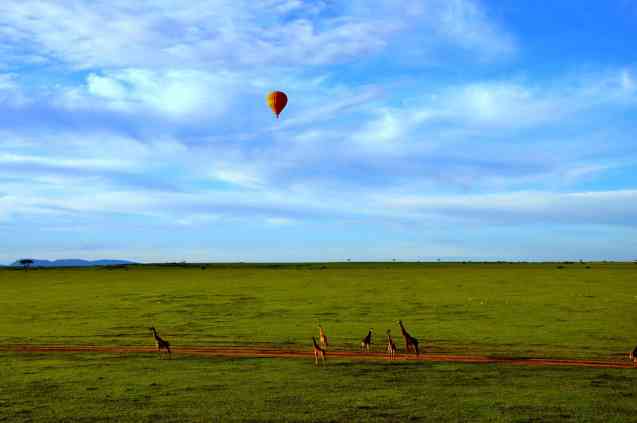
What could be better than watching the sun rise over the Serengeti while floating gently above its vast plains in a hot air balloon? Nothing, really. Hot air balloon rides are offered at various places in Africa (like Masai Mara and Serengeti) and provide an incredible, thrilling, bird’s-eye view of the vastness of Africa, dotted with wildlife.
Recommended trips with balloon safaris
4-Day Masai Mara Luxury Camping Safari - optional hot-air balloon trip over Masai Mara, Kenya
12-Day Kenya & Tanzania Budget Lodge Safari - optional hot-air balloon trip over Serengeti, Tanzania
7. Boat to the Great White Sharks

The boat used for our Great White Shark Cage Diving trips in South Africa is a custom-built catamaran. Combining comfort, stability, speed, and safety, this boat ensures not only a good trip for you but also promises minimal interference in the shark’s natural habitat.
The custom-built shark cage diving boat is typically a 46-foot (14m) long catamaran with a spacious upper deck for surface views of the sharks and other marine animals and platforms for the bait and decoy handlers to ensure the best possible shark viewing. It is a lightweight aluminium vessel powered by four big four-stroke 300-hp outboard engines and is equipped with the most advanced electronic navigation equipment.

Staying dry and comfortable
Featuring a spacious indoor cabin, as well as separate wet and dry outdoor decks, the design ensures that when you’re wet, you’re wet, but once you’re out and want to be dry and comfortable, you can be. The boat usually features a central dining area, storage facilities for personal items, and both male and female toilets.
Electronically, the boat is fully equipped with a tracking device, radios, GPS, radar and navigation equipment, depth finder and echo sounder, and even a 12V charging facility for cameras, cell phones, and laptops.
Safety - yours and the shark's
Safety is of utmost importance and there are life vests for all passengers, fire extinguishers, a life raft, and capsize bottles on the boat. In case of medical emergencies, there are two onboard First Aid kits, oxygen cylinders, and fluid replacement.
Not only is your safety cared for, but that of the sharks too. The cage has no sharp points or edges that could hurt the animals. The cage itself is specially constructed of reinforced steel and can take five people comfortably. It is lowered and winched back up using a winch from a sturdy gantry. Oxygen is supplied from the boat to divers via a ‘hookah’ system with hoses running into the cage.
This, too, is a once-in-a-lifetime experience. There’s not much more exhilarating than coming face-to-face with a Great White in its own habitat!
Recommended shark diving tours
2-Day Great White Shark Dive Package
Great White Shark Cage Diving Day Tour
8. Rubber-Ducking the Gorges

Jinja, in Uganda - where the longest river in Africa, The Nile, begins at its source, Lake Victoria - is one of the top whitewater rafting destinations in the world. Add in Victoria Falls, the Fish River Canyon, and the Orange (Gariep) River, where various boat options are offered, from boogie-boarding the rapids through canoeing to rubber ducking both flat water and white water, and it's an adrenaline junkie's dream. Your trip choice depends completely on your adrenaline requirements/limits!
Whichever you choose, be sure to check that the tour operator follows all safety regulations, ensuring that you have a safe, enjoyable trip through the gorge. Life jackets and helmets are non-negotiable, these waters can get wild, and a knowledgeable, trained guide will ensure you get the most out of your trip.
Recommended trips with rubber ducking
Victoria Falls Adventure Tour Package (Zambia)
Masai Mara & Gorilla Trekking Overland Tour or Uganda Safari & Gorilla Trekking Tour
9. East African Dhows (sailing boats)

There is nothing quite so beautiful as seeing a traditional dhow gliding through the warm, azure waters of the Indian Ocean. Originally used for trading, these long, narrow boats with triangular sails, expertly sailed by locals, are used along the east coast of Africa.
So whether you’re heading off to the Bazaruto Archipelago or exploring the coastline of Zanzibar , do yourself a favour and catch a ride on one of these graceful sailing vessels.
Recommended trips with dhow safaris
22-Day Zambia, Malawi, Mozambique & Kruger Safari
5-Day Zanzibar Holiday Package - Adventure Tour
10. Game Viewing Boat Cruises
One of the best ways to watch wildlife and birds on safari in Africa is without a doubt by boat. It's hard to compete with a laid-back sunset cruise. Exceptional wildlife and bird sightings along the rivers and estuaries in top game reserves of Africa. Stunning scenery. Chilled sundowners and snacks or dinner onboard. Easy-paced, yet exciting and novel.
The boats used on boat cruises vary but they are typically open-sided motorboats. The larger boats offer standing and sitting room and are sometimes double-deckers.

Chobe National Park in Botswana is one of the best places for boat-based game viewing in Africa. Another favourite spot for scenic boat cruises is the Zambezi River near Victoria Falls. There are plenty of other great destinations for game-viewing boat cruises, from Uganda to South Africa.
Recommended Safaris with Game-Viewing Boat Cruises
- Botswana: 5-Day Chobe & Okavango Delta Lodge Tour or Botswana Exclusive Camping Safari to Chobe & Okavango - include Chobe River boat cruises (as with most Chobe Safaris)
- Uganda: Gorilla Trekking & Queen Elizabeth Park Safari - includes boat cruises on Kazinga Channel (Queen Elizabeth Park) & in Murchison Falls National Park
11. Winding Through the Waterways in Mekoro

If your safari includes a trip into the Okavango Delta , you will more-than-likely experience the gentle pleasure of a trip in a mokoro canoe. Check with your tour operator that this is included as part of the package, or offered as an optional activity. You don’t want to miss out on this opportunity to get up close and personal with the prolific birds and wildlife – including elephants, hippos, and crocs – of the Okavango Delta.
Mokoro History
These traditional dug-out canoes are made of wood and guided by a ‘poler’, who stands at the helm. While originally made from indigenous trees, such as the Kingella or ‘Sausage Tree’, they are increasingly made of fibreglass these days. While not as ‘authentic’, this is preserving the indigenous trees of the area and provides just-as-good a means of transport through the spectacular waterways of the delta.
Experienced polers
Many people are afraid of hippos overturning a mokoro. While this is not an impossibility – this is Africa, after all, and you’re in their habitat – the polers are experienced in the area and are very aware that hippos are territorial creatures. They are sure to avoid dangerous situations.
A trip on a mokoro allows you to get as close to the sights and sounds of Africa as is physically possible. Don’t miss out on this once-in-a-lifetime experience.
Recommended safaris with Mokoro canoe trips
Botswana Parks & Okavango Delta Budget Lodge Safari
Budget Delta Mokoro Trail & Savuti Safari
12. Kayak & Canoe Safaris
If you're a kayaking or canoeing enthusiast this is the ultimate game-viewing safari vehicle for you. Watch the wilderness glide by as you paddle quietly along the rivers and waterways of Africa. A canoeing or kayaking safari gives you more independence than a mokoro trip where a guide poles you along.
The canoes and kayaks used on safaris vary widely, ranging from inflatable canoes to rugged old-school kayaks.

Some canoe safaris offer game viewing opportunities along the riverbanks and even in the waters whilst most are more about taking in the wild scenery and spotting birds.
Recommended safaris with canoe or kayak trips
- 16-Day Zambia & Malawi Small Group Safari or 4-Day Victoria Falls Tour in Zambia - include Zambezi River Canoe Trips
4-Day South Africa Garden Route Tour - includes Canoeing in Wilderness National Park
15-Day Zambia & Malawi Small Group Budget Safari - includes kayaking on Lake Malawi
13. Explore the African Bush on Horseback or Camelback
An incredible way to experience the bush up close! Horseback safaris are allowed in certain game reserves so if you want to experience the bush on horseback you'll need to pick your destinations accordingly. Two of the most popular African safari destinations that offer horseback safaris are Victoria Falls (Zambia or Zimbabwe) and Big 5 game reserves near Cape Town in South Africa.

For a whole new experience, you can explore Africa by camel. An entirely unique and exotic mode of transport indeed. Camelback safaris are far rarer than horseback safaris. You can only embark on a camelback adventure in a few places, including parts of East Africa.
Recommended trips with optional horseback safaris & camelback safaris
- Experience Southern Africa Exclusive Budget Safari & Zimbabwe & Botswana Safari (Lodge Tour) - optional horseback safaris at Victoria Falls
3 Day Big 5 Cape Town Safari & 2 Day Big 5 Cape Town Safari - optional horseback safaris at Aquila Game Reserve
Lake Turkana & Northern Kenya Camping Safari - includes an overnight camelback safari in Tuum (Samburu District of Kenya)
14. Walking Safaris in Africa

This is (obviously) only an option once you are in the game reserve. Depending on the safety i.e. the presence of dangerous predators, many game reserves offer guided walking tours. This is the ideal way to get a true, African, wildlife experience. By walking through the bush all your senses experience Africa – sight, smell, sounds, touch – unadulterated by the sound of motors and really off the beaten track.
Guides and trackers
Most reserves have highly experienced guides who are a fountain of knowledge regarding the fauna and flora of the area and are excellent trackers. This allows you to not only experience the bush but also learn all sorts of fascinating facts while seeing the birds, insects, and animals that call Africa ‘home.’
__large__medium.jpg)
If you have the opportunity, do not miss out on a walking safari. You can’t get closer to nature than this.
Recommended walking safari trips
4-Day Kruger Park Walking Safari or 5-Day Kruger Safari - Hiking Tour
South Africa Walking Safari to Kruger & Zululand
7-Day South Luangwa Tented Camps Walking Safari
Talk to an Africa travel expert to find the ideal types of safari vehicles and other transport modes for your trip to Africa.

[Updated in 2022: originally posted in 2014]
About the Author
Briony chisholm wordsmith & pharmacist.

Similar & Related Blog Posts
Below you’ll find further reading and articles related or similar to this post.
What are Africa Overland Tours & Adventures all about?
Landia Davies | August 21 2018

Complete Safari Packing List: Easy Guide 2 What to Pack for African Safaris
Landia Davies | February 01 2022

10 Best National Parks in Africa - in the Top African Safari Countries
Landia Davies | March 05 2024

Size Up Africa Overland Safaris - Small vs Big
Landia Davies | July 30 2013
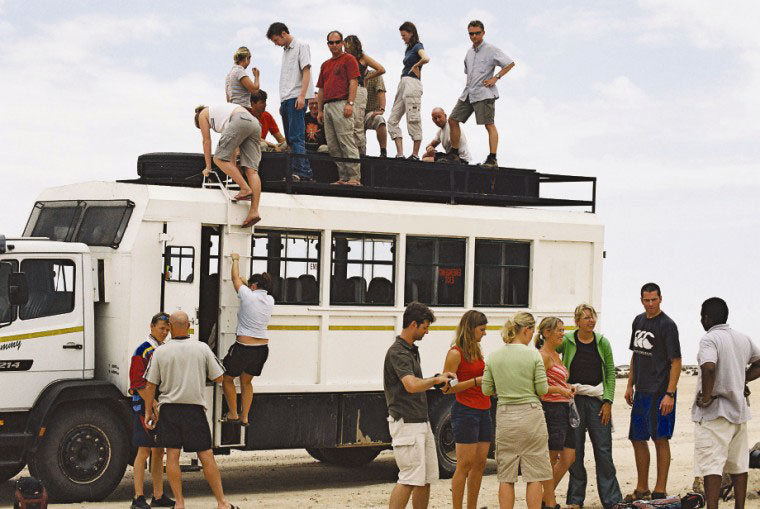
What’s a safari and what is a wildlife safari in Africa like nowadays?
Landia Davies | May 06 2022

Overland Travel in Africa: how has the adventure evolved?
Andrew Arnott | August 30 2018

African safaris with kids made easy
Katherine Murphy | August 14 2018

Budget Safari Guide: How Much Does a South African Safari Cost?
Kate Explorer | August 26 2022
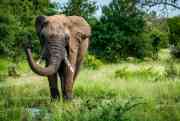
How to plan an African safari on a very tight budget: the 8-step guide to safari planning
Ingrid Van Wyk | January 19 2024
__small.jpg)
The best elephant safari in Africa? 9 African safaris with elephants galore
Landia Davies | August 03 2022

When is the all-round best time for African safari trips?
Ingrid Van Wyk | December 08 2020

The Safari Safety Guide: How to Stay Safe on African Safaris
Briony Chisholm | June 15 2022
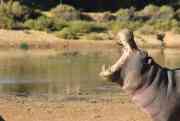
Private Group?
A private, tailor-made safari is within your reach. Experience all of your bucket-list safari related items on a budget now.
Are African Safaris Safe? Top Tips and Facts for a Safe Adventure
January 23, 2024
In this article...
Are African Safaris Safe: Tips and Facts for a Safe Adventure An African safari can be an exhilarating and unforgettable experience, offering the chance to witness majestic wildlife in their natural habitat. However, many travellers often question the safety of such an adventure. Understanding the potential risks and equipping oneself with the proper knowledge and precautions are essential to ensure a safe and enjoyable safari experience in Africa. Is it Safe to Go on an African Safari? Before setting off on an African safari, it’s crucial to comprehend the potential wildlife risks you may encounter. While game drives and walking safaris provide incredible opportunities to observe animals such as lions, elephants, cheetahs, and leopards in their natural environment, they must remember that these are wild animals and should be treated cautiously and respectfully. Following safe safari practices is paramount for a secure journey. Whether in Tanzania, Kenya, Botswana or Zimbabwe, always adhere to the instructions of experienced safari guides. They are well-versed in navigating the African wilderness and can ensure your safety during encounters with wildlife. Choosing between a guided tour and a self-drive adventure is important when considering a safari. Guided safaris often provide a safer option as the trained guides are equipped to handle any potential dangers, enhancing the overall safety of the journey. What Are the Safety Tips for African Safaris? Interacting with wild animals is undoubtedly one of the most thrilling aspects of an African safari. To ensure everyone’s safety, always maintain a safe distance from the animals and never exit the safari vehicle unless instructed by the guide. These precautions are essential when encountering potentially dangerous animals like lions or elephants. Choosing safe accommodations is imperative when planning an African safari. Opt for lodges and camps that prioritize guest safety and are in secure areas. ... Read more
Are African Safaris Safe: Tips and Facts for a Safe Adventure
An African safari can be an exhilarating and unforgettable experience, offering the chance to witness majestic wildlife in their natural habitat. However, many travellers often question the safety of such an adventure. Understanding the potential risks and equipping oneself with the proper knowledge and precautions are essential to ensure a safe and enjoyable safari experience in Africa.

Is it Safe to Go on an African Safari?
Before setting off on an African safari, it’s crucial to comprehend the potential wildlife risks you may encounter. While game drives and walking safaris provide incredible opportunities to observe animals such as lions, elephants, cheetahs, and leopards in their natural environment, they must remember that these are wild animals and should be treated cautiously and respectfully.
Following safe safari practices is paramount for a secure journey. Whether in Tanzania, Kenya, Botswana or Zimbabwe, always adhere to the instructions of experienced safari guides. They are well-versed in navigating the African wilderness and can ensure your safety during encounters with wildlife.
Choosing between a guided tour and a self-drive adventure is important when considering a safari. Guided safaris often provide a safer option as the trained guides are equipped to handle any potential dangers, enhancing the overall safety of the journey.
What Are the Safety Tips for African Safaris?
Interacting with wild animals is undoubtedly one of the most thrilling aspects of an African safari. To ensure everyone’s safety, always maintain a safe distance from the animals and never exit the safari vehicle unless instructed by the guide. These precautions are essential when encountering potentially dangerous animals like lions or elephants.
Choosing safe accommodations is imperative when planning an African safari. Opt for lodges and camps that prioritize guest safety and are in secure areas. This will minimize the risks of wildlife encounters and provide peace of mind throughout the journey.
While navigating potential danger zones, you must stay vigilant and follow your guide’s instructions. This includes understanding the behaviours of animals and avoiding any actions that may provoke them. You can significantly reduce the likelihood of dangerous encounters by respecting the animals’ territory and adhering to safety protocols.
What to Do in Case of Wildlife Encounters?
In predatory animal encounters, such as lions or leopards, it’s crucial to remain calm and follow the guide’s directions. Avoid making sudden movements or direct eye contact with the animals, as this may be perceived as a threat. By staying composed and trusting your guide’s expertise, you can effectively navigate such encounters while prioritizing safety.
Similarly, when encountering elephant herds, it’s crucial to maintain a respectful distance and avoid any sudden or startling actions. Elephants are brilliant and protective animals, and respecting their space is key to ensuring a safe and harmonious encounter.
Be cautious of potential hippopotamus encounters near water sources, such as rivers or lakes. Despite their seemingly docile appearance, hippos can be aggressive and territorial. Always adhere to the guide’s instructions and avoid approaching or provoking these animals to prevent potential confrontations.
Is Traveling to Africa Alone Safe?
Embarking alone on an African safari raises questions about safety and the potential risks. While solo travels offer a sense of independence and exploration, opting for a guided tour is often safer. Guided safaris provide the expertise of knowledgeable guides adept at navigating the wilderness and ensuring the safety of all participants.
When travelling solo, incorporating safety measures into your itinerary is essential. This includes informing local authorities or safari operators about your itinerary and ensuring regular check-ins for added security. Solo travellers can enhance their safety during an African safari by taking proactive steps to stay safe and informed.
Understanding local safety precautions and respecting cultural and environmental norms are crucial for a safe and respectful journey. Being mindful of local customs and heeding the advice of experienced guides can contribute to a secure and enriching experience while travelling alone in Africa.
What Are the Safest African Safari Destinations?
Choosing the right destination is pivotal in ensuring a safe and enjoyable experience when considering an African safari. Several countries in East Africa, such as Tanzania, Kenya, and Uganda, offer top wildlife-safe destinations known for their diverse ecosystems and abundant wildlife.
Game drive locations within national parks and game reserves provide ample opportunities to observe wildlife while maintaining a safe distance. Countries like Botswana and South Africa also boast secure safari lodges within protected areas, offering a serene and secure base for exploring the surrounding wilderness.
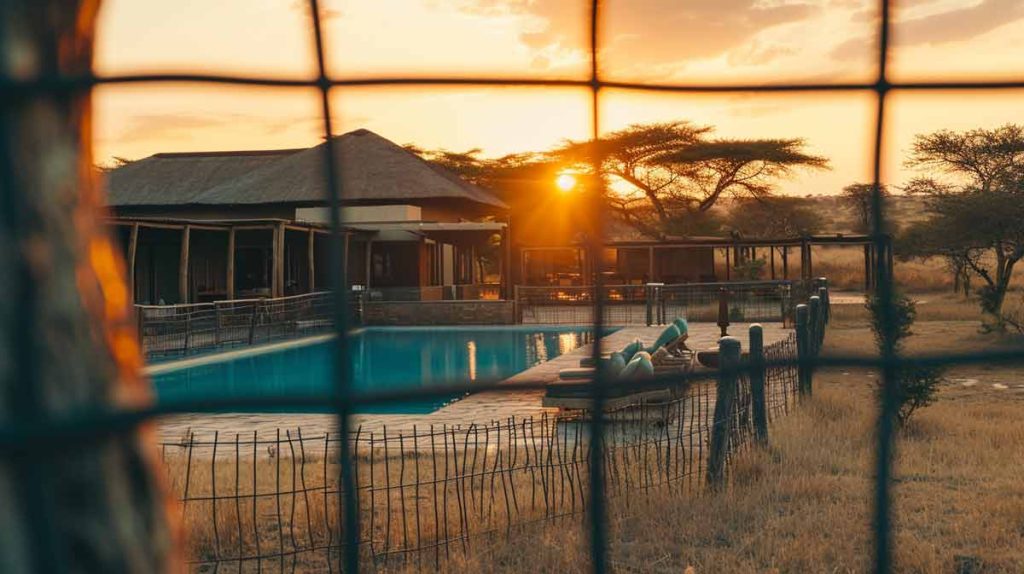
By selecting secure safari lodges and prioritizing destinations renowned for their wildlife conservation efforts, travellers can stay safe and keep wildlife encounters respectful and harmonious. Prior research into the safest safari destinations can ensure a memorable and secure safari adventure for all participants.
Dink is a seasoned explorer with a profound passion for Africa, calling the continent home for the last quarter-century. From the vibrant cultures of West Africa to the breathtaking landscapes of southern Africa, Dink's journey is marked by an insatiable curiosity and a love for the untamed.
Through years of travel, Dink and family have mastered the art of mapping the uncharted, and embracing each new discovery. Dink's narratives are not just stories but windows to experience Africa, offering readers a glimpse into its profound beauty and complexity. Dink’s expertise and unique perspective make for an invaluable guide for those eager to explore the continent's hidden treasures.
Join Dink and be inspired to embark on your own adventures.
AFRICAPROOF
PH +44 7537 143 112
SOUTHERN AFRICA
©Copyright 2024 AFRICAPROOF
Many people are unaware that the types of vehicles typically used for wildlife viewing safaris in eastern Africa differ from those used in southern Africa.
In eastern Africa (namely Ke nya, Rwanda, Tanzania and Uganda) you will typically find closed safari vehicles including the ubiquitous minibus’s. As these countries have extensive road networks many safaris are conducted with a driver and vehicle which stay with you from the moment you arrive to the time you depart. Closed vehicles are not ideal for wildlife viewing (which I will explain below) but their use in eastern Africa on road based safaris makes sense as travelers would not want to drive for hours, at speed, along paved highways and on dirt roads – in an open vehicle subjected to wind, rain, cold, heat, and dust.
Looking more closely at safari vehicles in eastern Africa I will focus on Tanzania which has the region’s best wildlife viewing. Closed safari vehicles in Tanzania typically take up to 6 guests in 3 rows of seating with a pop-top roof hatch which is raised for wildlife viewing (see photos). They can be minibuses (which in some areas are more abundant than the wildlife) or 4×4 Land Cruisers or 4×4 Land Rovers. At Ultimate Africa we do not book minibuses for clients.
For wildlife viewing you stand and pop your head and shoulders through the hatch. If you don’t wish to stand you can open a window although on Land Cruisers and Land Rovers the sliding windows can be quite small. Also note that most safari vehicles in eastern Africa are fitted with internal framing which can get in the way of moving around within the vehicle and viewing game. Closed vehicles can also become very hot as they often do not have AC. One bonus with the closed vehicles used for long road based safaris – they often have a small fridge (although the noise can be distracting when watching animals). Open safari vehicles typically have a cooler filled with ice and drinks.
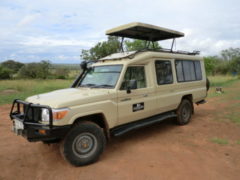
Tanzania now has good value, reliable, light airplane service which can fly guest’s to their specific safari lodges and camps – this saves a tremendous amount of driving time (as an example you can fly 1.5 hours from Arusha to the Serengeti rather than driving 12 hours). It allows many of these properties to offer open safari vehicles. As you will see below, when it comes to wildlife viewing, open vehicles are the way to go and Tanzanian properties that offer them are high on our list of places to stay!
When flying between our preferred Tanzanian safari camps and lodges you will use their open vehicles and their resident guides who know what the animals in the area are up to and where to find them. Guides based in towns such as Arusha (near Kilimanjaro Airport where many Tanzania visitors arrive), who conduct road based safaris, often have no clue what is happening wildlife wise in an area. While driving they will call other guides (either by radio or on their cell phone) for updates. Upon arrival at each safari camp or lodge they will ask the resident guides what is going on. I have also gotten lost with Arusha based guides as they are not out in remote areas every day and don’t know which roads are best to use.
If you opt for a road based safari in Tanzania you will have the benefit of a private vehicle for yourself but you will not be able to partake in open vehicle game drives at the camps and lodges that offer them without paying additional surcharge (on a road based safari you have your own vehicle and guide and therefore pay a lower nightly rate at each property as you are not using the property’s guides / vehicles). When using a lodge or camps open vehicle, with their guide, you typically share the vehicle with other guests who are also staying at the property. If you prefer to have exclusive use of an open vehicle this needs to be arranged, at extra cost, in advance.
At Ngorongoro Crater, a must see for many visitors to Tanzania, all of the safari vehicles are closed. Guests visiting the crater will land 50 miles away at the Lake Manyara Airstrip and then transfer by road 1 hour to their accommodations on the crater rim. The crater rim, at 7,500 feet, is often cool and drizzly – hidden in clouds / fog making arrival by plane impossible. As the vehicles that are used to transfer guests are the same that are used for wildlife viewing they are closed for guest comfort.
In southern Africa open vehicles are the norm and minibus’s are rarely seen. Most safaris in Botswana, Namibia, South Africa, Zambia and Zimbabwe are conducted in open sided 4×4 vehicles – Land Cruisers and Land Rovers. Road based safaris are not common and in some countries, such as Botswana where the road networks are very limited, flying between safari properties makes much more sense… in some parts of Botswana a 20 minute flight can save over 24 hours of very slow, remote wilderness, driving.
When on safari in an open vehicle there is nothing between you and Africa’s wilderness and wildlife. Sounds are more easily heard, smells are easier to pick up, and most importantly it is far easier to take photos and follow animals as they move around.
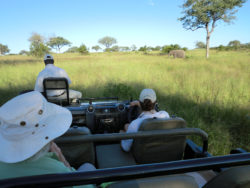
Seating is tiered with 3 rows typically taking no more than 6 guests – 2 guests per row. For guests who wish to sit up front next to the guide this is often possible… simply ask. Vehicles are shared with other guests from the camp or lodge where you are staying. If you prefer to have exclusive use of an open vehicle this needs to be arranged, at extra cost, in advance.
Although completely open on the sides many open vehicles normally have permanent sun shades which also help keep you dry if you get caught in the odd rainstorm. Note: If you are at a safari camp or lodge and it is dumping with rain most guides don’t recommend game drives in either type of vehicle – you generally see little game and the vehicles can really tear up the roads and natural areas. The chances of getting stuck are also much higher. Some safari properties have fitted roll down clear plastic windows to be used in the event of rains. Once rolled down and snapped / zipped / velcroed into place they are impossible to see through and often fog up… more trouble than they are worth.
Some open vehicles have a fold down seat attached to the front bumper for a tracker to sit on. In my opinion having a tracker up front makes no difference in spotting game. In addition upon encountering predators such as lion and leopard your guide will need to stop as the tracker will need to climb into the front seat next to the guide.
I have been going on safari for 20 years now and I cannot recall one person who has ever said they prefer a closed vehicle for wildlife viewing.
Where to sit in the safari vehicle? The most comfortable, least bouncy seats are up front or in the first row of seats… the last row, especially appealing in open vehicles where the seating is tiered, is by far the bounciest. Back problems – sit up front… you will be much happier!
One last consideration when planning an African safari. When on a road based safari the weight and size of your luggage is not as important as when on a flying safari. Within eastern Africa most light air transfers limit guests to 15 kilograms (33 pounds) of luggage packed in a soft bag. In southern Africa most light air transfers are limit travelers to 20 kilograms (44 pounds) of luggage packed in a soft bag or bags. As a point of reference when I travel my duffel bag weighs near 17 to 20 pounds including clothing and shoes. My carryon, often a backpack or other smaller bag, holds my computer, camera, phone, chargers, toiletries and such… it weighs close to 15 pounds. I readily admit that after traveling to Africa several times a year for 20 years I do have the packing down to an art (both Lorna and I include packing tips, so you too can travel lightly, in the predeparture information we provide to all clients upon booking.
Ian Proctor Ultimate Africa founder and president
©1996-2023 Ultimate Africa Safaris®
4580 Klahanie Drive SE, PMB 211 Sammamish, WA 98029 USA
- OUR GUARANTEE
- Privacy Policy

- Wildlife Safaris
- Mountain Trekking
- Beach Holidays
- Historical and Archaeological Sites
- Wildlife Safari Tours
- Mountain Trekking Tours
- Cultural Tours
- Beach Holiday Tours
- Student Adventures
- Tanzania / Kenya Combo Tours
- Accommodations
- Booking a Safari
- Transportation
- Pricing for Tanzania Treks
- Pricing for Wildlife Safari Tours
Equipment Safety
- Customer Reviews
- Our Memberships
- Feedback Form
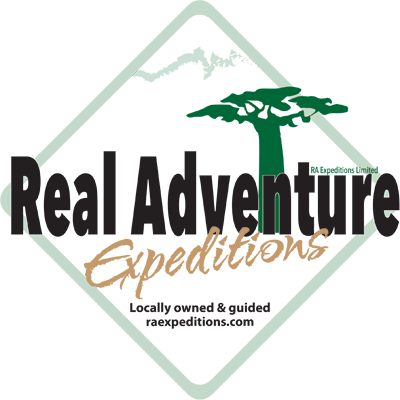
Home » About Us » Equipment Safety
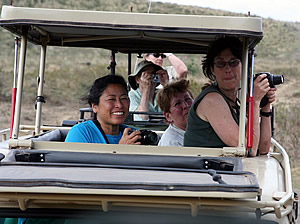
All of our camping gear is well selected. Most of our tents are canvas and camping chairs are also made of steel and canvas to ensure comfort. Our full camping gear includes tents, mattress, pillows, sleeping bags, dining tents (when necessary), kitchen, camping chairs, camping tables, washing basins with stands, camping shower, and cookery equipment.
>> CHECK OUT YOUR PACKING LIST
© 2004 - 2023 RA Expeditions Limited | All Rights Reserved
This website uses cookies. We use cookies to analyze our traffic, enhance our website’s functionality and performance and better experience for our users. If you require more information, please view our Cookie Policy .

Call Today! 1-800-387-2706
Will i be safe in an open safari vehicle.
Safety Ratings.
NHTSA’s 5-Star Safety Ratings help consumers compare vehicle safety when searching for a car. More stars mean safer cars.
Combines Driver and Passenger star ratings into a single frontal rating. The frontal barrier test simulates a head-on collision between two similar vehicles, each moving at 35 mph.
Combines Side Barrier and Side Pole Star Ratings into a single side rating.
Combines the Side Barrier Driver and the Side Pole Star Ratings into a Front Seat rating. The Rear Seat rating is derived from the Side Barrier Rear Passenger rating.
The Side Barrier test simulates an intersection collision between a standing vehicle and moving barrier at 38.5 mph.
The Side Pole Barrier test simulates a crash into a fixed object like a tree or utility pole.
The Rollover Resistance test measures the risk of rollover in a single-vehicle, loss-of-control scenario.
Recommended Safety Technologies
These features have been either verified by NHTSA or reported by the vehicle manufacturers as meeting NHTSA’s performance criteria.
Learn about safety technology
Recalls & Safety Issues.
This is a record of safety issues for vehicles of this year, make, model and trim. If you are a vehicle owner, search for recalls by your Vehicle Identification Number (VIN). The vehicle identification number tells you if your car is affected.
Learn about our recall process
Have a safety problem?
Report a problem with your vehicle, tires, car seats or other equipment. We review every problem as we work to keep our roads safe.
Report a safety problem
Find recalls by VIN.
Every vehicle has a unique VIN. Enter a VIN to learn if a specific vehicle needs to be repaired as part of a recall.
Recall information from this VIN lookup tool is provided by the manufacturer conducting the recall. NHTSA does not record VIN information or results provided through this tool.
Unable to load safety issue details.
Recently searched, vehicle comparison.
THE 5 BEST Moscow Safaris
Safaris in moscow.
- Adrenaline & Extreme Tours
- Gear Rentals
- Nature & Wildlife Tours
- 5.0 of 5 bubbles
- District Central (TsAO)
- 3rd Transport Ring (TTK)
- District North-Eastern (SVAO)
- District Eastern (VAO)
- District South-Western (YuZAO)
- Lomonosovskiy
- Ostankinskiy
- Meshchanskiy
- Krasnoselskiy
- Maryina Roshcha (Jewish Quarter)
- Good for Couples
- Good for Kids
- Good for Big Groups
- Adventurous
- Budget-friendly
- Good for a Rainy Day
- Hidden Gems
- Honeymoon spot
- Good for Adrenaline Seekers
- Things to do ranked using Tripadvisor data including reviews, ratings, photos, and popularity.

1. Rybokhotsoyuz

2. Easy Russia Tour Guide
3. UTS GROUP

4. 365AltaiMongolia

5. #1 Russia -Tanzania | Zanzibar, Serengeti Safari & Kilimanjaro Agency | BURIGI CHATO SAFARIS CO LTD

6. Aviashop.Ru

7. Transsib Moscow

8. BASK TOUR
- Easy Russia Tour Guide
- #1 Russia -Tanzania | Zanzibar, Serengeti Safari & Kilimanjaro Agency | BURIGI CHATO SAFARIS CO LTD
- 365AltaiMongolia
Help | Advanced Search
Computer Science > Robotics
Title: redefining safety for autonomous vehicles.
Abstract: Existing definitions and associated conceptual frameworks for computer-based system safety should be revisited in light of real-world experiences from deploying autonomous vehicles. Current terminology used by industry safety standards emphasizes mitigation of risk from specifically identified hazards, and carries assumptions based on human-supervised vehicle operation. Operation without a human driver dramatically increases the scope of safety concerns, especially due to operation in an open world environment, a requirement to self-enforce operational limits, participation in an ad hoc sociotechnical system of systems, and a requirement to conform to both legal and ethical constraints. Existing standards and terminology only partially address these new challenges. We propose updated definitions for core system safety concepts that encompass these additional considerations as a starting point for evolving safe-ty approaches to address these additional safety challenges. These results might additionally inform framing safety terminology for other autonomous system applications.
Submission history
Access paper:.
- Other Formats
References & Citations
- Google Scholar
- Semantic Scholar
BibTeX formatted citation
Bibliographic and Citation Tools
Code, data and media associated with this article, recommenders and search tools.
- Institution
arXivLabs: experimental projects with community collaborators
arXivLabs is a framework that allows collaborators to develop and share new arXiv features directly on our website.
Both individuals and organizations that work with arXivLabs have embraced and accepted our values of openness, community, excellence, and user data privacy. arXiv is committed to these values and only works with partners that adhere to them.
Have an idea for a project that will add value for arXiv's community? Learn more about arXivLabs .
DCI investigates homicide in Harrison County
- Monday, April 22, 2024
- Press Release

April 22, 2024
HARRISON COUNTY, Iowa - At approximately 4:30 p.m. on April 21, 2024, the Harrison County Sheriff’s Office responded to a call of a vehicle rollover south of Modale, Iowa. When deputies arrived on scene, they contacted the driver of the rollover, identified as 22-year-old Sebastin O’Brien of Little Sioux, Iowa. O’Brien became combative with deputies, and after a short struggle, deputies placed O’Brien into custody.
Upon further investigation, it was learned the rollover vehicle did not belong to O’Brien. Harrison County deputies went to the residence of the vehicle’s registered owner and located the owner deceased inside the residence. The name of the deceased individual is being withheld pending notifications to family members.
As a result of evidence collected , O’Brien was charged with Murder in the 1st Degree and taken to the Harrison County Jail. Additional charges are pending.
The criminal investigation is being conducted by the Harrison County Sheriff’s Office with assistance from the Iowa Division of Criminal Investigation and Iowa State Patrol. The deceased male was transported to the Iowa Office of the State Medical Examiner in Ankeny where a forensic autopsy will be performed this week.
The investigation is ongoing, and no other information will be released at this time. Note: A criminal charge is merely an accusation, and a defendant is presumed innocent until proven guilty.
Complaint and Affidavit
Photo of Sebastin O'Brien

ABOUT THE IOWA DEPARTMENT OF PUBLIC SAFETY
The Iowa Department of Public Safety (DPS) is the largest law enforcement agency in the state. It includes seven divisions and several bureaus, all working together with local, state, and federal government agencies and the private sector to keep Iowa a safe place by following our core values: leadership, integrity, professionalism, courtesy, service, and protection. Divisions within the Iowa DPS: Iowa Division of Criminal Investigation, Iowa Division of Narcotics Enforcement, Iowa State Patrol, Iowa State Fire Marshal Division, Iowa Division of Intelligence and Fusion Center, Professional Development and Support Services Division, and Administrative Services Division. The Department of Public Safety is led by the Commissioner who is appointed by the Governor.
Iowa Department of Public Safety
215 E. 7th St.
Des Moines, IA 50319
https://dps.iowa.gov
Darrell Simmons, Special Agent In Charge
Related links, dci website, dci facebook, related files, sebastin o'brien complaint & affidavit.pdf.
US probes Tesla recall of 2 million vehicles over Autopilot
- Medium Text
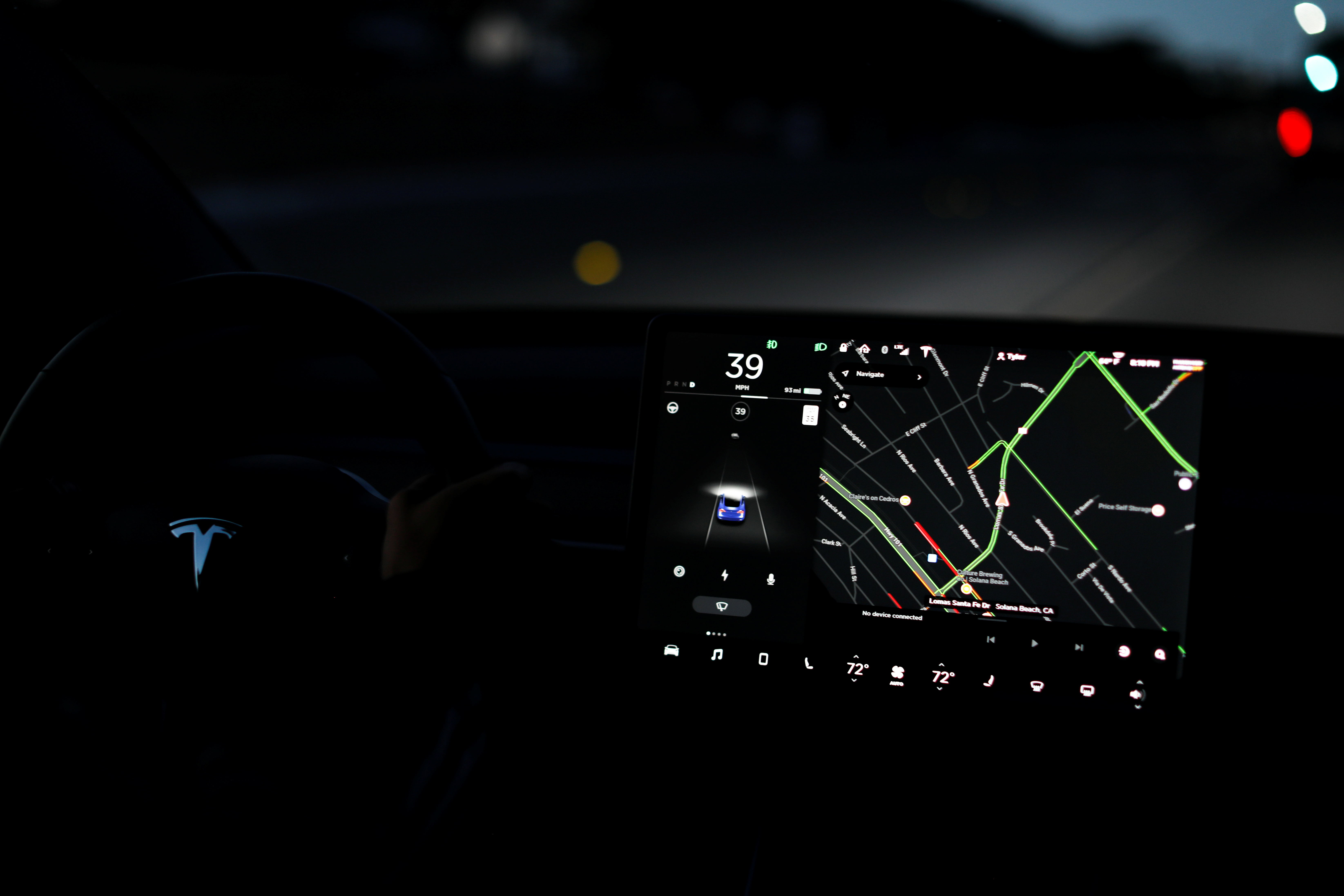
- Company Carparts.Com Inc Follow
- Company Tesla Inc Follow
Sign up here.
Reporting by David Shepardson; editing by Jason Neely and Louise Heavens
Our Standards: The Thomson Reuters Trust Principles. New Tab , opens new tab

Business Chevron

Chevron posts Q1 profit beat with oil production gains
Oil giant Chevron Corp beat estimates for first-quarter profit on Friday as higher production volumes in the U.S. helped offset a hit from weak natural gas prices and fuel margins.

An official website of the United States government Here's how you know
Official websites use .gov A .gov website belongs to an official government organization in the United States.
Secure .gov websites use HTTPS A lock ( Lock A locked padlock ) or https:// means you’ve safely connected to the .gov website. Share sensitive information only on official, secure websites.
FMCSA Declares New Jersey-licensed Driver an Imminent Hazard to Public Safety
WASHINGTON – The U.S. Department of Transportation’s Federal Motor Carrier Safety Administration (FMCSA) has declared a New Jersey-licensed commercial driver Gurpreet Singh to be an imminent hazard to public safety and ordered him to immediately cease operating any commercial motor vehicle (CMV) in interstate commerce. Singh was served the Federal order on April 19, 2024.
On March 28, 2024, while operating his CMV, Singh rear-ended a passenger vehicle on Highway 10 in Washington County, Hillsboro, Oregon and left the scene of the accident. After being located, an inspection of Singh’s truck revealed a bottle marked “vodka” inside the cab of his CMV. Singh was placed out-of-service and directed not to operate his CMV. Nevertheless, Singh blatantly disregarded his out-of-service order and operated his CMV later that same day in Clackamas County, Oregon. After attempting to evade a sheriff’s deputy while operating his CMV, Singh was apprehended and found to be visibly impaired. Singh was arrested and testing showed he had a blood alcohol concentration of 0.07%, well over the .04 threshold for a CMV driver. Under the Federal Motor Carrier Safety Regulations, drivers with a commercial driver’s license (CDL) are subject to a variety of prohibitions on use of alcohol prior to and while driving CMVs, including a prohibition on using any alcohol within four hours of driving and a prohibition on driving with an alcohol concentration of .04 or greater.
Prior to the March 28, 2024, incidents in Oregon, on August 31, 2023, Singh was operating his CMV in an erratic fashion in Pinal, Arizona when he was apprehended. A Preliminary Breath Test (PBT) revealed a quick capture of .111% and Singh was arrested.
Based on these incidents, Singh will be listed as prohibited in FMCSA’s Drug and Alcohol Clearinghouse, and FMCSA is working with the state of New Jersey to disqualify his CDL. He is charged in Arizona with one count of driving under the influence of alcohol and one count of operating a CMV while under the influence of alcohol. Singh is also charged in Oregon with one count of driving under the influence of alcohol.
FMCSA’s Imminent Hazard Out-of-Service Order states that Singh’s “blatant disregard for the safety of the motoring public demonstrated by these actions substantially increases the likelihood of serious injury or death to you and the motoring public if not discontinued immediately.”
Failing to comply with the provisions of the Federal Imminent Hazard Order may result in civil penalties of up to $2,304. Knowing and/or willful violations may result in criminal penalties.
A copy of the Imminent Hazard Order issued to Gurpreet Singh is available here .
Rachel Lodice, of Jericho, pleads not guilty in fatal Massapequa crash, fleeing in stolen public safety car

A Jericho woman charged for allegedly causing a fatal crash in Massapequa before stealing a public safety vehicle and fleeing the scene told investigators she had been drinking beforehand, according to court records and the police.
Nassau District Court Judge Veronica Irwin set cash bail Wednesday at $250,000 for Rachel Lodice, 21.
Lodice had been driving south on Hicksville Road at 6:45 p.m. Tuesday in a gray 2023 Kia Rio with Georgia plates when she struck a 2022 Nissan Altima as it headed east on Sunrise Highway, Nassau County police said in a news release.
The Nissan's driver, Cynthia Mitchell, 64, of Freeport, was taken to Nassau University Medical Center, where medical staff pronounced her dead, police said. Mitchell's passenger, a 46-year-old female, was treated at the medical center for nonlife-threatening injuries.
Lodice was in police custody Wednesday for her arraignment, where she faced charges of second-degree vehicular manslaughter, leaving the scene of an incident, driving while intoxicated and third-degree grand larceny, police said. Lodice entered a not-guilty plea through her Legal Aid attorney, and Irwin also set a $500,000 bond, court records show. Lodice's license also was suspended.
Our latest updates on the news that matters most to you.
By clicking Sign up, you agree to our privacy policy .
After the crash, according to court records, Town of Oyster Bay Public Safety Sgt. John Graham arrived to assist in rescue efforts. Lodice, who later told police she had been drinking before the crash, ran up to Graham's Chevy Equinox patrol vehicle as he sat inside and told him that her side hurt and she was thirsty, the court records show. He handed Lodice a bottle of red Gatorade and “told her to stay here,” records show. Graham then got out of his vehicle to render help to the women in the Nissan.
“There goes your car,” someone yelled out, according to his statement contained in the court records.
“I looked and saw my vehicle traveling east on Sunrise Highway,” Graham said.
He then radioed to dispatch that his vehicle had been stolen. The Department of Public Safety immediately began tracking the vehicle and sending its location to police, a spokesperson said Wednesday.
About 20 minutes later, according to court documents, officers located the vehicle, and Lodice, wearing Graham's department-issued jacket, near a home on Neptune Avenue in Seaford, close to 2 miles from the crash.
Police said she had slurred speech and bloodshot eyes, according to the court records.
Lodice also took a blood-alcohol test, police said. The test results had not been released as of late Wednesday.
While in custody in the back seat of a police vehicle, according to court records, Lodice told officers: “I'm not supposed to drink with my medicine.”
With Shari Einhorn
Updated 45 minutes ago Gilgo Beach search latest ... Tax breaks for manufacturer... Knicks playoffs ... Islanders vs. 'Canes, Game 3
Get more on these and other NewsdayTV stories
Most Popular
Latest videos.
Tesla that fatally hit Washington motorcyclist may have been in autopilot; driver arrested
Jeffrey nissen was killed in a crash with a tesla on friday. the driver, who was arrested, says he was on the company's autopilot system when the crash happened..

A Tesla that fatally hit a motorcyclist in Washington state was on the company's autopilot driving system, the surviving driver told authorities, who have not yet verified the claim.
Twenty-eight-year-old Jeffrey Nissen of Stanwood, Washington, was pronounced dead at the scene of the crash Friday after he was hit by a Tesla Model-S and thrown from his bike on State Route 522 in Maltby, Washington, about 25 miles northeast of Seattle.
Nissen had slowed for traffic while the Tesla diver did not, police said.
The Tesla's 56-year-old driver was arrested on suspicion of vehicular homicide and told police that he had been using the car's autopilot program at the time of the crash.
Here's what we know.
Driver arrested after police say he was distracted
In a probable-cause document obtained by the Seattle Times , an officer wrote that the driver was arrested for "inattention to driving, while on autopilot mode, and the distraction of the cell phone while moving forward." The driver trusted "the machine to drive for him," the document said.
The driver also told police that the car became stuck on top of the motorcyclist and couldn't be moved in time to save him, according to the document, the Times reported.
Investigators have not verified that the driver was using autopilot at the time of the crash, according to Washington State Patrol Capt. Deion Glover.
"It’s still in the early stages of investigation as a lot of unknowns are still out there," Glover said in an email.
USA TODAY reached out to Nissen's family through a GoFundMe page for his funeral costs .
Autopilot has had safety problems in past
In December, the National Highway Traffic Safety Administration issued a recall of more than two million Teslas over issues with the cars' autopilot feature.
"In certain circumstances when the Autosteer feature is engaged, and the driver does not maintain personal responsibility for vehicle operation and is unprepared to intervene as necessary or fails to recognize when Autosteer is canceled or not engaged, there may be an increased risk of a crash," according to the recall notice from the agency .
The recall affected the following Tesla vehicles: the 2012-2023 Model S , 2016-2023 Model X , 2017-2023 Model 3 , and 2020-2023 Model Y vehicles equipped with all versions of Autosteer.
Tesla sent an over-the-air software update to all cars to comply with the recall after the Washington Post published an investigation into crashes, including some fatal , that occurred while autopilot was engaged in situations where it should not have been.
In January, a similar recall occurred in China, affecting over 1.6 million cars.
Earlier this month, Tesla settled a wrongful death lawsuit involving a crash that killed Apple engineer Wei Lun "Walter" Huang after the Model X he was in veered off a highway and crashed in 2018. An investigative report found fault with both the Tesla and the driver , saying he was likely distracted and that the Tesla's autopilot failed to keep the vehicle in its lane, and that its collision-avoidance software failed to detect a highway barrier.
Elon Musk addresses autopilot's future with Tesla
In the company's first quarter earnings call Tesla CEO Elon Musk doubled down on the role of autopilot in the company's future.
"If someone does not believe that Tesla can solve autonomy, I don't think they should be an investor in the company," Musk said.
USA TODAY reached out to Tesla for comment on the latest crash and did not receive a response.
Contribution: Emily DeLetter , Natalie Neysa Alund

IMAGES
VIDEO
COMMENTS
What is a Safari Vehicle? You might be asking yourself what African safari cars are and why they matter? In general, they are large 4×4 vehicles that have been modified to ensure the passengers' safety. It is worth remembering that the regulations about the vehicles differ from national parks to private reserves and from province to province.
Use that initial drive to quiz your driver on how to stay safe and drive in a safe manner. Here are some further tips for those looking to do a self-drive safari: Never get closer than 20 m (65 ft) to large game, especially Cape buffaloes, rhinos and elephants. Give a wide berth to injured animals and those with young.
African safari vehicles vary according to country and type of trip - find out which you'll be using with Go2Africa, the safari specialists. Int Toll Free Numbers 1-866-438-8677. ... This is all about safety - an open-sided game viewing vehicle is not suitable for normal roads, and in the parks where cheetah populations are thriving, these ...
Many safari vehicles are open-topped, and the wildlife is generally accustomed to these. But, if you stand up or wave something around on the side, some animals will get annoyed and consequently aggressive. ... If you are on a walking safari, you will no doubt be briefed on safety by your guides. But, there are times when you'll be walking in ...
Most safari vehicles are four-wheel-drive, customized to maximize your game-viewing experience. The exact design of the vehicle will differ from reserve to reserve and the preference of your African safari tour operator. ... Understanding the rules of conduct and appropriate behaviour is an important part of safari safety. With awareness and ...
All about safari vehicles. Safari vehicles can be broadly defined into two categories; open sided and closed sided. Where you go, and whether you "drive in" or "fly in" to camps will define whether you get an open sided or a closed sided vehicle. If you drive in to the camps, you will likely be in a closed sided vehicle, as for longer ...
Safety while camping on safari; Safari spots in Kenya; Other great safari destinations in Africa; 4 important safety rules on safari. No matter where you go in sub-Saharan Africa, there are rules and regulations you must follow when in the bush. These safari safety rules are designed to keep you and the animals alive.
Safety is paramount, especially on regular roads where open-sided game viewing vehicles are impractical. Additionally, in parks with thriving cheetah populations, closed vehicles offer a secure vantage point for observing these agile hunters. ... Discover the wonders of the safari vehicle's "boot-type" storage, where treasures like coffee ...
It's much easier to capture photos and the experience seems much closer. If shade is needed most vehicles will have sunshades. Whatever sort of vehicle you're in you'll have an amazing safari, for more inspiration, check out our 26 best safari ideas or call our team on 01768 603 715 and they'd be happy to help.
Safari Vehicles 101. September 7, 2022By Kati Knowland. WHAT ARE THE TYPES OF SAFARI VEHICLES? There are two main types of safari vehicles — open and closed. While open safari vehicles live up to their name, generally with three rows of tiered seating and completely open sides, closed safari vehicles are a bit more nuanced.
Exploring the Safety of Safari Vehicles, When embarking on a thrilling safari adventure, safety should be a top priority. Safari vehicles +256 771056981 [email protected]
Open side 4×4 safari vehicles offer an unparalleled experience of the African wilderness, creating lifetime memories for nature and wildlife enthusiasts. While there are inherent risks in any adventure, the safety measures in place, including trained guides, vehicle safety features, and controlled passenger numbers, aim to mitigate these risks.
Your 4×4 vehicle expertly maneuvered by our experienced knowledgeable Safari guide is your safe house. It will keep you cocooned from the wildlife, the rough terrain bumpety bump ride, and the range of weather elements you will encounter. The vehicle will act as your photography hide, breakfast and/or lunch table especially the bonnet/hood ...
What safari vehicles can you expect to travel in? From overland trucks to safaris on foot, and everything between, here are the. Toll Free Numbers: 1-888-414-6513 -808-189-1052, All Other Countries - +27 21 791 0878. ... Safety First on Safari! Safety is non-negotiable. Check with your tour operator that there is a fully-stocked First Aid kit ...
Interacting with wild animals is undoubtedly one of the most thrilling aspects of an African safari. To ensure everyone's safety, always maintain a safe distance from the animals and never exit the safari vehicle unless instructed by the guide. These precautions are essential when encountering potentially dangerous animals like lions or ...
Closed safari vehicles in Tanzania typically take up to 6 guests in 3 rows of seating with a pop-top roof hatch which is raised for wildlife viewing (see photos). They can be minibuses (which in some areas are more abundant than the wildlife) or 4×4 Land Cruisers or 4×4 Land Rovers. At Ultimate Africa we do not book minibuses for clients.
Every Safari vehicle is fitted with all necessary accessories to overcome challenging situations during safari trips. Our Drivers-Guides have Mechanical training and this is a very important item when it comes to safety. Our safari vehicles are special for safari, equipped with pop-up roofs to maximize game viewing and photographing, a real ...
Answer: The safari vehicles are very safe, but please take heed of your guide's instructions for the best safari viewing experience - no standing or leaning out of the vehicle and no loud talking or shouting. However, depending on the safari location and game lodge you may encounter different types of safari vehicles. Learn more.
Global NCAP's Awards, presented on the occasion of the NCAP24 World Congress, recognise some of the outstanding leaders working in the field of vehicle safety. Mixed results in Global NCAP's latest crash test ratings. On the opening of #NCAP24, Global NCAP's new #SaferCarsForIndia crash tests show a mixed set of results.
Walking tour around Moscow-City.Thanks for watching!MY GEAR THAT I USEMinimalist Handheld SetupiPhone 11 128GB https://amzn.to/3zfqbboMic for Street https://...
NHTSA's 5-Star Safety Ratings help consumers compare vehicle safety when searching for a car. More stars mean safer cars. Combines Driver and Passenger star ratings into a single frontal rating. The frontal barrier test simulates a head-on collision between two similar vehicles, each moving at 35 mph.
Safaris in Moscow. 1. Rybokhotsoyuz. 2. Easy Russia Tour Guide. An excellent and reliable service which made my trip mesmorizing with easy moscow. Especially Anna is a wonderful... 3. UTS GROUP.
1.1 5 safety rules in Moscow and in Russia. 1.1.1 Use various taxi apps instead of catching a taxi on the street. 1.1.2 Stay at the properties around the city centre or within the Sadovoe Koltso ( Garden Ring Road) 1.1.3 Don't let suspicious people buy you drinks. 1.1.4 Always carry your passport (or a copy with you)
Existing definitions and associated conceptual frameworks for computer-based system safety should be revisited in light of real-world experiences from deploying autonomous vehicles. Current terminology used by industry safety standards emphasizes mitigation of risk from specifically identified hazards, and carries assumptions based on human-supervised vehicle operation. Operation without a ...
Car Safety. Add Topic. Only 1 of 10 SUVs gets 'good' rating in crash test updated to reflect higher speeds The Insurance Institute for Highway Safety tested 2023-2024 cars at various speeds up to ...
April 22, 2024. HARRISON COUNTY, Iowa - At approximately 4:30 p.m. on April 21, 2024, the Harrison County Sheriff's Office responded to a call of a vehicle rollover south of Modale, Iowa. When deputies arrived on scene, they contacted the driver of the rollover, identified as 22-year-old Sebastin O'Brien of Little Sioux, Iowa.
U.S. auto safety regulators said Friday they have opened an investigation into whether Tesla's recall of more than 2 million vehicles announced in December to install new Autopilot safeguards is ...
WASHINGTON - The U.S. Department of Transportation's Federal Motor Carrier Safety Administration (FMCSA) has declared a New Jersey-licensed commercial driver Gurpreet Singh to be an imminent hazard to public safety and ordered him to immediately cease operating any commercial motor vehicle (CMV) in interstate commerce. Singh was served the Federal order on April 19, 2024.
Rachel Lodice, 21, from Jericho, on Wednesday pleaded not guilty to multiple charges after allegedly causing a fatal crash in Massapequa and driving off in a public safety vehicle that had stopped ...
The recall affected the following Tesla vehicles: the 2012-2023 Model S, 2016-2023 Model X, 2017-2023 Model 3, and 2020-2023 Model Y vehicles equipped with all versions of Autosteer.